BREWING POSSIBILITY
Flavorful opportunities pour from the Chapman Coffee Club experience.

CHAPMAN UNIVERSITY MAGAZINE FALL 2022
Assistant
Assistant
S. CEMAN
BROUWER
RACHEL MORRISON, PH.D.
DIRECTOR
CONTRIBUTING DESIGNERS
Alex Quintanilla (MFA ‘22), Jillian Warren ‘24
CONTRIBUTING WRITERS
Stace Dumoski, Joy Juedes, Belana Beeck ‘21 (MFA ‘23)
PROJECT MANAGER
Sirna
Editorial Office: One University Drive, Orange, CA 92866-9911
issues/change of address: email magazine@chapman.edu
Chapman Magazine (USPS #007643) is published biannually by Chapman University. ©2022 Chapman University.
Reproduction in whole or in part without written permission is prohibited.
Periodicals postage paid at Orange, Calif., and at additional mailing offices.
POSTMASTER:

Send address changes to: Chapman Magazine One University Drive • Orange, Calif. 92866-9911
The mission of Chapman University is to provide personalized education of distinction that leads to inquiring, ethical and productive lives as global citizens.
ON
A
of
to
has
around the
the
2 UP FRONT 2 President’s Message 3 The Power to Do Good 4 Martina Nieswandt Named Vice President of Research 5 Celebrating the Museum Without Walls 6 39th Chapman Athletics Night of Champions Hall of Fame Inductees 8 Araceli Martinez Leads Cross-Cultural Center 8 New Endowments Support Excellence at Argyros School 9 Biology Researcher Sydni Au Hoy ’22 Earns Chapman’s Highest Student Honor 10 Chapman Welcomes Class of 2026, Including Highest-Ever Rate of First-Generation Students 11 Chapman Maintains Lofty No. 4 Spot in Hollywood Reporter’s Rankings of Top Film Schools 12 FEATURES 12 The Banner of Leadership 18 Earth Systems Science 22 Crossing the Border, Building a Bridge 28 Brewing Possibility 32 Healing for the Long Haul 34 Something in the Air 40 New Supercomputer Puts Chapman at the Cutting Edge of AI Research 41 Supporting Student Mental Health 48 ALUMNI NEWS 48 Distinguished Alumni Awardees 50 Virtuoso of Connection 51 Canine Chemistry 52 Class Notes 54 Chapman in Hollywood 56 Chapman’s Local Impact Is More Than Monetary 46 CHAPMAN NOW 46 Presidential Fellow Ranks Among Top 1% of Researchers 46 Survey Shines a Light on Equity in STEM 47 In Memoriam 42 BOOKSHELF 42 Browse the Chapman Faculty Bookshelf 44 Inside the Maelstrom of a Romance for the Ages CHAPMAN UNIVERSITY MAGAZINE FALL 2022 DANIELE C. STRUPPA, PH.D. President MATT PARLOW Executive Vice President and Chief Advancement Officer JAMIE
Vice President of Strategic Marketing and Communications JEFF
Vice President of Brand Identity and Visual Strategy
Vice President of Communications and Brand Strategy EDITOR Dennis Arp PHOTOGRAPHY Adam Hemingway ART
Julie Kennedy
Karan
Delivery
Chapman.edu IN THIS ISSUE
THE COVER:
richly supportive community
developed
art and science
coffee. Turn to Page 28
learn more about
Chapman Coffee Club.
DINOSAUR SUMMER
STORY BY DENNIS ARP / PHOTOS BY FLO SINGER ‘22
For Sarah Wallace ’22, both the bone and the experience stand apart. Wallace stumbled upon and then helped dig out a rare specimen –the pelvis of a 40-foot-long gryposaurus, a genus of duckbill – as she prospected for dinosaur fossils in the Badlands of Montana. Now her Late Cretaceous find, wrapped in a 4,000-pound jacket of plaster for transport to Orange County, is ready for the next leg of its journey.
During the fall semester, Chapman students will join in further excavation of the 80 million-yearold fossil. As the chipping-away progresses on campus, Chapman film students Flo Singer ’22 and Amalie Seyffert ’23 will add new layers to their documentary about the project.

Wallace’s own journey started with a Chapman honors course called “Dinosaurs,” taught by Professor Jack Horner, whose game-changing paleontology insights helped inspire “Jurassic Park.” Each summer Horner invites students to join him for field research.
Wallace seized the opportunity.
“It changed my life,” said the recent television writing and production graduate. “It’s insanely cool to stand where that dinosaur stood, to walk where it walked.”
Though she’s now off to begin her TV writing career – perhaps to pitch a series about a protagonist who digs dinosaurs – she’s also thinking about her find inching its way out of the rubble and into the light in a Chapman lab. “It will be hard to stay away,” Wallace said.

Sarah Wallace‘22 had a dreamshe would make a major discoverythe night before she did just that. As a result, the team has termed thespecimen “Dream Bone.”
Less than 20% of the bone was visible before it was jacketed and transported to Orange County for further excavation. So everyone on the team is excited to see all that’s inside the plaster cast.
Dodge College students Flo Singer ‘22 andAmalie Seyffert ‘23 have taken a hands-on approach as they tell the story of theproject with their documentary film.
The Montana farm of Dan and Lila Redding provides a picturesque home base for the annual summer project of fossil finding and excavation.
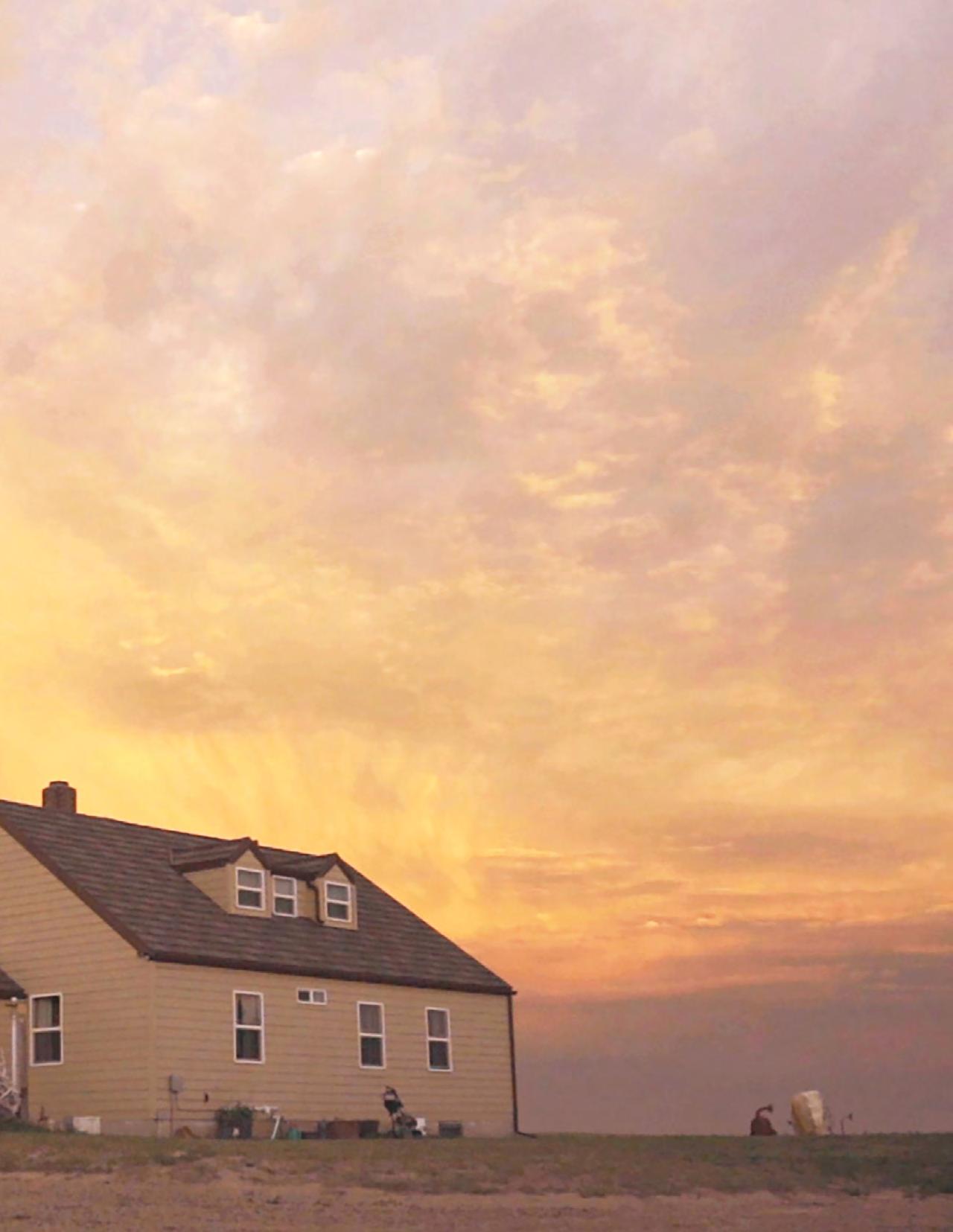
It was no small task getting the 4,000-pound find jacketed and then dragged up a 250-foot hill so it could be prepped for its 1,200-mile journey to Orange County.


FALL 2022 1
MESSAGE FROM THE PRESIDENT BUILDING GLOBAL IMPACT ON A FOUNDATION OF COMMUNITY

At Chapman University, our goal is transformational change on a scale that matches the magnitude of today’s global challenges. But we also know that the best source of experience and the greatest chance to make a difference is often right here in our home communities.
With this issue of Chapman Magazine, we seek to show how our community of scholars is working on a wide range of initiatives that reflect Chapman’s dedication to this local-to-global approach.
For instance, on Page 40 you will read about how Chapman’s participation in an alliance of high-tech leaders in Orange County has led to the university receiving a donation of one of the fastest supercomputer clusters in our region.
Nvidia Corp. chose Chapman to receive the supercomputer so we can pursue the shared goal of preparing more students from underserved communities to thrive in the local and global high-tech economies. Additionally, with the cutting-edge supercomputer as a vital new tool in our research arsenal, Chapman faculty and students will take the next steps in their research in artificial intelligence and the data sciences, tackling issues that have international ramifications.
Also in this issue, beginning on Page 18, you will find a story about the groundbreaking work of a Chapman team led by Hesham El-Askary, professor of earth systems science and remote sensing. With the support of a $1 million grant made possible by our local congressmember, Lou Correa, Chapman researchers are applying their expertise in machine learning and data mining to address the immense challenges of global climate change.
The team’s research covers everything from drought, wildfires and the risk of flooding here in Orange County to the effects of desertification and rising temperatures in the Middle East. In addition to local policymaking, the international graduate research team mentored by Professor El-Askary will have a chance to influence global strategy during this fall’s United Nations COP 27 climate change conference in Sharm el-Sheikh, Egypt.
Such leadership is critical, whether our scholars are addressing regional needs or issues of international importance. Beginning on Page 12, you’ll learn more about the work of four transformational leaders at Chapman who are applying their expertise both locally and nationally on issues of cyber security, campus design, legal representation and strategic marketing and communications.
With their work, they show that even as Chapman’s growing influence makes us players on the world stage, we continue to nurture our local community connections. Those links are highlighted by recent independent reports showing that Chapman generates more than $213 million in economic output for the City of Orange each year, and more than $1.1 billion for California.
On Page 56, you can read more about the many ways we contribute to our communities – financially, socially and culturally.
That sense of community is evident across our campuses, from the studios of Chapman Radio in the basement of Henley Hall (Page 34), to the Ranney Food Processing Lab inside our Keck Center for Science and Engineering, where the Chapman Coffee Club is brewing up a supportive culture (Page 28), to the community clinic on our Rinker Health Science Campus in Irvine, where Crean College clinicians are helping sufferers of long COVID reclaim their lives (Page 32).
These are all exemplars of Chapman’s local-to-global commitment to transformative impact.
Beginnings become easier when we see where things can lead. Let there be no doubt that what starts here can truly change the world.
With gratitude,
 Daniele C. Struppa President, Chapman University
Daniele C. Struppa President, Chapman University
2 CHAPMAN UNIVERSITY MAGAZINE
THE POWER TO DO GOOD
BY STACE DUMOSKI
W ho are you and what will you fight for?”
This is the question Nobel Peace Prize Laureate and human rights activist Nadia Murad posed to the graduates of the Class of 2022 during Chapman University’s Commencement celebration in May.


“This audience is different from all other audiences I’ve spoken to because I can feel the hope all around me,” she said, addressing an audience of 6,000 graduates, faculty, friends and families gathered on Wilson Field.
Murad, who was awarded the Nobel Prize in 2018, offered a challenge to
the new graduates as they prepared to leave Chapman.
“The world is big, and beautiful, and troubled. It needs you,” she said. “No matter what you pursue after today – whether you go to work for a tech company or become a writer or a teacher. If you start a family or run for political office. If you become a doctor or an artist or none of these things or a combination of all of them, will you also try to make things better? Will you look at your life, big moments and small, good and bad, and use what you believe in to help others?”
CAPTIVITY, FREEDOM AND THE FIGHT FOR JUSTICE
Murad’s message was heavy with the weight of personal experience. In 2014, her home in northern Iraq was attacked by ISIS, an act of genocide against the minority Yazidi population. Thousands were murdered, including Murad’s mother and six bothers. Murad herself was taken captive and, along with thousands of other women and children, held in sexual slavery by the invading forces, until she was able to escape.
Since gaining her freedom, Murad has shared her story many times – to world leaders and human rights
organizations, in her memoir, “The Last Girl: My Story of Captivity, and My Fight Against the Islamic State” – not for sympathy, but to raise awareness about the plight of her people and of others who have suffered through similar tragedies. Through her organization Nadia’s Initiative, she works to restore the community of her homeland and to bring justice to the survivors, while aiding survivors of gender violence around the world.
E NGAGING STUDENTS IN THE QUEST FOR THE GREATER GOOD
This summer, Murad began a three-year appointment as a Presidential Fellow at Chapman, providing even more Chapman students with the chance to learn from and be inspired by her experiences fighting for social justice.
During a pre-Commencement event, “From Genocide to Justice: A Conversation with Nobel Peace Prize Winner,” Murad answered questions from students. Murad, now a student herself at American University in Washington, D.C., spoke to the importance of education and learning about those who are different from yourself.
“Only one other time, when I moderated a conversation with Nobel Peace Prize laureate and Holocaust survivor Elie Wiesel, have I witnessed an audience so absorbed in every single word spoken,” said Jennifer Keene, Dean of Chapman’s Wilksion College of Arts, Humanities, and Social Sciences, which hosted the question and answer session.
NOBEL PEACE LAUREATE NADIA MURAD, CHAPMAN’S NEWEST PRESIDENTIAL FELLOW, CHALLENGES STUDENTS WITH A MESSAGE OF HOPE AND JUSTICE.
Murad and Chapman University President Daniele Struppa pose with a new bust of the activist that will be placed on the university’s campus. The quote from Murad on the pedestal reads, “The world has only one border. It is called humanity. The differences between us are small compared to our shared humanity. Put humans first.”
“This audience is different from all other audiences I’ve spoken to because I can feel the hope all around me.”
- Nadia Murad
FALL 2022 3 UP FRONT
MARTINA NIESWANDT NAMED
V ICE PRESIDENT OF RESEARCH
Following a national search, Martina Nieswandt, Ph.D., has been named vice president for research of Chapman University, effective Oct. 1, 2022.
“As Chapman continues its rise as a nationally ranked R2 institution, Dr. Nieswandt is uniquely poised to lead us forward,” said Provost Norma Bouchard, Ph.D., citing Nieswandt’s experience as associate vice chancellor for research and engagement at the University of Massachusetts Amherst.
Nieswandt has a distinguished record of having published more than 40 articles and two books on a range of topics related to STEM education, with particular focus on chemistry and mathematics. Her research has been sustained by continuous funding, totaling more than $7.5 million, by the National Science Foundation, the American Educational Research Association, the U.S. Department of Education and the German Science Foundation. She has delivered numerous keynote addresses, presentations and workshops both nationally and internationally.
In her work as an educator, Nieswandt has offered a range of courses at both the undergraduate and graduate levels on topics ranging from science and mathematics curriculum and qualitative research design and practice to theories of learning and teaching in STEM education and gender issues in mathematics, science and technology education.

“Dr. Nieswandt has a broad understanding of research, scholarly and creative inquiry. As a specialist in STEM education, with a focus on chemistry and mathematics, she demonstrates an expertise that transcends boundaries of discipline,” Bouchard said. “She is currently developing a comprehensive blueprint for multidimensional measures/metrics for research and development that will serve our community well.”
In her new role at Chapman University, Nieswandt will further develop and lead research strategic planning, working in close partnership with the vice provost for graduate education and the deans of Chapman’s 11 schools and colleges, while also collaborating with federal and state offices, granting agencies, foundations, business and industry to identify research collaborations and funding opportunities. She will oversee the university’s research support areas and will also participate in campus research-related space and facilities planning on the Orange and Rinker campuses.
“I am excited to join Chapman because of its strong commitment to its teacherscholar model,” Nieswandt said. “And I am thrilled building on Chapman’s existing research administration and infrastructure to support and expand this model across all disciplines and to work with the campus community in promoting a collaborative research environment that fosters equity, diversity and inclusion and is guided by ethical conduct.”
Martina Nieswandt, Ph.D., is a widely respected STEM scholar and researcher whose work has been sustained by more than $7.5 million in funding.
DR. NIESWANDT WILL DEVELOP AND LEAD RESEARCH STRATEGIC PLANNING.
“I am thrilled ... to work with the campus community in promoting a collaborative research environment that fosters equity, diversity and inclusion and is guided by ethical conduct.”
- Martina Nieswandt, Ph.D.
4 CHAPMAN UNIVERSITY MAGAZINE UP FRONT
A MILESTONE FOR THE MUSEUM WITHOUT WALLS
BY STACE DUMOSKI
Since it was first established in 2010, Chapman University’s Phyllis and Ross Escalette Permanent Collection of Art has served as an important research institute and learning laboratory for students, while curating an ever-growing collection of public art.
The collection has grown to include 830 works – contemporary and modern paintings, prints and sculptures displayed throughout Chapman’s Orange and Rinker campuses, in hallways, study spaces and other public areas where they can be freely viewed.
This year, the Escalette Collection celebrates its “10+2” anniversary, a somewhat tonguein-cheek acknowledgement that official 10-year celebrations were postponed by the pandemic in 2020.

nearly 100 works by women artists and more than 100 artworks by artists from underrepresented racial and ethnic groups.

“We’ve seen first-hand the positive impact that art can have on a space and the people who work, study and learn within it,” says Jessica Bocinski, registrar of the collection.
“In acquiring and displaying artwork by diverse artists, we contribute to the sense of inclusivity on campus in a very tangible way.”
Housed nominally in Wilkinson College of Arts, Humanities, and Social Sciences, the collection exists as “a museum without walls,” with artworks exhibited throughout campus. In addition, thanks to the addition of “EMuseum” in 2019, the entire collection can now be viewed online at chapman. emuseum.com/collections.
“As curators of an academic collection, we’re committed to sharing research through eMuseum, as well as providing opportunities for students to contribute to a growing body of research,” says Shen, Ph.D. “So eMuseum isn’t simply a static catalog of the collection, but a dynamic teaching tool and resource for everybody, whether they’re on campus or anywhere in the world.”
“Along with those of everyone else, our plans for 2020 were upended, but now in 2022 we’re determined to celebrate the generosity of Phyllis and Ross Escalette and their family, as well as every artist whose work is part of the collection,” says Fiona Lindsay Shen, director of the collection.
Over the past five years, the Escalette staff has focused on increasing the equity and inclusion of the collection, acquiring
Last year, the Escalette Collection received a $35,000 grant from the National Endowment for the Arts, which is being used to commission a unique work of interactive public art for Chapman and the Orange community.
“Code becomes Palette” by internationally renowned artist Daniel Canogar will use electronic animations that continuously shift, mutate and ooze bright color to visualize data unearthed by another highprofile Wilkinson College research project – the Survey of American Fears. Using custom software to run existing and realtime data, the artwork will literally unmask America’s deep-held fears.
The new artwork will be unveiled by summer 2023. To learn more about the Escalette Collection of Art, including how you can support this important acquisition, visit Chapman.edu/escalette.
CHAPMAN UNIVERSITY’S ESCALETTE PERMANENT COLLECTION OF ART CELEBRATES “10+2” YEARS AS A CENTER OF PUBLIC ART FOR THE CAMPUS AND COMMUNITY.
“In acquiring and displaying artwork by diverse artists, we contribute to the sense of inclusivity on campus in a very tangible way.”
- Jessica Bocinski
Bovey Lee, Cross Section, oil on canvas, 1994. Gift of the artist.
FALL 2022 5 UP FRONT
39TH
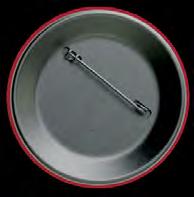
NIGHT
HALL OF FAME INDUCTEES
JILLIAN FELGER-MABEE ’09 VOLLEYBALL

THREE-TIME ALL-AMERICAN SELECTION ACADEMIC ALL-AMERICAN CAREER RECORD HOLDER FOR HITTING PERCENTAGE

On Induction: “I teared up. My years playing at Chapman mean so much to me. The proud feeling when I attended Linda Ly Zaragoza’s induction (2017) was something I hoped I could feel for myself.”

I’ll Never Forget: “Beating Claremont-Mudd-Scripps in five games during my junior year. We lost the first game by a huge deficit, won the next two, and the final two games went beyond the normal game point. I’ll never forget how we came together as a team… and the celebration after we won.”

LAUREN KAMIYAMA ’09 BASKETBALL


ALL-REGION SELECTION
CAREER RECORD HOLDER FOR ASSISTS AND STEALS
TOP-3 ALL-TIME FOR MADE THREE-POINTERS
On Induction: “I’m so honored. This is a prestigious group of Panthers I’m joining, and I would have never imagined I would be inducted into the Chapman Hall of Fame.”

I’ll Never Forget: “Our playoff game against LaVerne. We were down about 20 points with something like 5 or 6 minutes left. Coach Jue believed a game was never over until the final buzzer. This game was the epitome of that as we managed to tie it to force overtime, then take control in overtime. It was such an emotional win. I couldn’t even process what just happened.”

CHAPMAN ATHLETICS
OF CHAMPIONS
6 CHAPMAN UNIVERSITY MAGAZINE UP FRONT
BUDDY KLOVSTAD ’06


BASEBALL
TWO-TIME ALL-AMERICAN SELECTION TWO-TIME ALL-REGION SELECTION



TOP-10 ALL-TIME FOR WINS, INNINGS PITCHED, ERA, STRIKEOUTS AND GAMES STARTED
On Induction: “It means a lot to me, my wife, my kids and the rest of my family. I grew up in the City of Orange. To be able to attend Chapman University and play baseball in front of my family and local community was a great opportunity for me. I know by the outpouring of messages that this also means a lot to former Panthers, many of whom will join me in the HOF in the coming years.




I’ll Never Forget: “The times I was able to just step off the mound in the later innings of games and just look around and soak it all in.”

ALL-AMERICAN
THREE-TIME ALL-REGION
ALL-TIME FOR CAREER WINS,STRIKEOUTS, ERA AND SHUTOUTS
On Induction: “Honored is an understatement.My daughters getting to watch their mom be inductedinto Chapman’s Hall of Fame is a priceless gift theuniversity has bestowed on me.”
I’ll Never Forget: “Both Regionals and Nationalsare big standouts. Our team was pure magic in thosetournaments. But the friendships with my teammatesare my fondest memories. Long after our playing days,we’ve been there for each other through weddings,babies and funerals. Lifelong friendships came from myexperience as a Chapman softball player, and there’snothing more important than that.”
cominggamesabletojuststepoffthe andjustlookaround
MAGGIE WILDER WERNER ’07 (MA ’12)SOFTBALL TWO-TIME
SELECTION
SELECTIONTOP-5
FALL 2022 7 UP FRONT
Araceli Martinez Leads Cross-Cultural Center
BY MICHELLE ANGUKA
Chapman University’s Office of Diversity, Equity and Inclusion has named Araceli Martinez executive director of the CrossCultural Center and First-Generation Programs.
In her role, Martinez will oversee programming for both the Cross-Cultural Center and Chapman’s Promising Futures First-Generation Program.
“It’s an exciting time to be at Chapman,” says Martinez. “The support of DEI efforts from President Struppa and the university as a whole is encouraging and a clear sign that the university is headed in the right direction.”
Martinez arrived at Chapman following a highly accomplished 15-year term helping lead the Multicultural Center at the University of Nevada, Reno. But it’s her personal experience as a first-generation Latina student that she says drives her passion for serving students.
New Endowments Support Excellence at Argyros School
BY STACE DUMOSKI
Thanks to the generosity of Chapman University donors, two new endowed chairs have been established in the Argyros School of Business and Economics.
The Doti-Spogli Chair in Free Enterprise will recognize a faculty member whose research or outreach spotlights the benefits of economic freedom and the policies that extend it.
“Free enterprise — and its corollary of market-based economies — is the best model yet created to create prosperity and insure liberty for the greatest number of people,” says Ron Spogli, whose donation funds the new endowed chair. The chair is co-named in honor of Jim Doti, Chapman president emeritus and professor of economics.
to fundamental texts and explores the impact of free enterprise on the vitality of a society. The chair will also administer the annual Doti-Spogli Student Prize and the Doti-Spogli Faculty Prize.
Also in the Argyros School, the Burra Executive Professor in Accounting has been endowed by a gift from Chapman Trustee Jim Burra and his wife, Kay. Jim Burra served on the Board of Governors from 1998-2011 and was elected to Chapman’s Board of Trustees in April 2011.
“I had so many great mentors along the way who helped me get to where I am,” says Martinez. “I want to give back to students what I received from others.”
Of the appointment, Vice President of Diversity, Equity and Inclusion Reginald Chhen Stewart said, “Having a decade and a half of experience leading both cultural centers and first-generation programs, Araceli Martinez brings a wealth of knowledge and experience to the executive director role. Her work has been recognized by Excelenica in Education, the College Board and the U.S. Department of Education, to name a few.”
Stewart also noted that bringing the CrossCultural Center and the Promising Futures program within the office of DEI better supports Chapman students.
“We have an outstanding Promising Futures program in need of more space to operate and a wonderful Cross-Cultural Center that is seeking new ways to engage students and create a homeaway-from-home environment. When you put both initiatives on paper, the intersection becomes evident,” Stewart says.
Spogli is the former U.S. Ambassador to Italy and the Republic of San Marino. In 2008, he received the Sue M. Cobb Award for Exemplary Diplomatic Service. Spogli also founded Freeman Spogli & Co., a leading private equity investment firm based in Los Angeles.
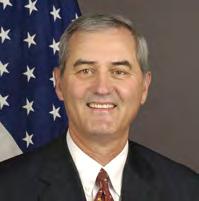

Chapman University Presidential Fellow Mark Skousen has been appointed as the inaugural chair. In this role, he will develop and teach a course that introduces students
Associate Professor of Accounting Hank Adler has been appointed as the inaugural holder of the new professorship, which recognizes an outstanding faculty member who is dedicated to the students and advances the reputation of the Argyros School. Adler has been on the Argyros faculty for almost 20 years.
“We are thrilled to establish the Burra Executive Professor of Accounting,” Jim Burra said. “The Argyros School of Business and Economics has experienced tremendous success in recent years, and we are excited to support and invest in its future. We can think of no better person to serve as the inaugural professor than Hank Adler.”
The Doti-Spogli Chair in Free Enterprise is co-named in honor of Jim Doti, Chapman president emeritus and professor of economics.
“Free enterprise — and its corollary of market-based economies — is the best model yet created to create prosperity and insure liberty for the greatest number of people,” says Ron Spogli, whose donation funds the new Doti-Spogli Chair in Free Enterprise.
“The Argyros School of Business and Economics has experienced tremendous success in recent years, and we are excited to support and invest in its future,” says Chapman Trustee Jim Burra, who along with his wife, Kay, has made possible the Burra Executive Professor in Accounting.
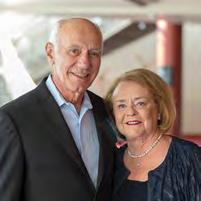
“I want to give back to students what I received from others.”
- Araceli Martinez
8 CHAPMAN UNIVERSITY MAGAZINE UP FRONT
Biology Researcher Sydni Au Hoy ’22
Earns Chapman’s Highest Student Honor
BY JOY JUEDES
Sydni Au Hoy ‘22 speaks at Schmid College of Science and Technology’s degree ceremony in May 2022.

A n alumna that faculty mentor Greg Goldsmith calls “one of the single most remarkable undergraduate students I have ever worked with at Chapman” has received the university’s most prestigious undergraduate student honor.

Sydni Au Hoy ’22 earned the Cecil F. Cheverton Award during the Campus Leadership Awards ceremony in May at Fish Interfaith Center. Au Hoy, a biological sciences major from Honolulu, finished her undergraduate studies in fall 2021.
“Being a recipient of the Cheverton Award is an honor and a reflection of the many learning experiences I have encountered these past four years, the exceptional mentorship provided by Chapman faculty and the invaluable support present around every corner of this institution,” Au Hoy says.
She spoke at Schmid College of Science and Technology’s degree ceremony in May.
“As college students, we have the opportunity to not only dream about becoming a biotech engineer or a data analyst or a healthcare practitioner, we have the opportunity to pursue that dream,” Au Hoy said. “Schmid
provided us with the tools we needed to take our first steps, while Chapman offered us endless opportunities to use them. But it was our faculty, our mentors and our fellow peers who truly showed us that even as undergraduate students, we have the capacity to reach incredible achievements.”
Au Hoy, who worked as an orthopedic medical scribe at Cedars-Sinai Kerlan-Jobe Institute after graduation, also received the 2021 Kevin and Tam Ross Undergraduate Research Prize for her research on seizures. She published an article in Epilepsy and Behavior Reports journal and did research on the response of higher education to COVID-19 and plant microbiology.
Goldsmith, an assistant professor of biology and Au Hoy’s faculty mentor, says the Cheverton winner is “remarkably humble, and would never admit as much, but I think we have only seen a preview of all that she will do in the future.”
Au Hoy was co-president of the Be KYnd to Your Heart Foundation, which spreads awareness of cardiac arrests. She served as student representative on Schmid’s diversity, equity and inclusion task force and a committee leader on the Schmid Student Leadership Council.
“She has a drive to learn, a maturity that belies her years, and a certain fearlessness that allows her to ask questions when others are too afraid,” Goldsmith says.
Au Hoy has a clinical fellowship with Stanford Medicine and plans to pursue a career in health care.
“Being a recipient of the Cheverton Award is an honor and a reflection of ... the invaluable support present around every corner of this institution.”
– Sydni Au Hoy ’22
Sydni Au Hoy with her faculty mentor Assistant Professor Greg Goldsmith.
FALL 2022 9 UP FRONT
CLASS OF 2026: FIRST-GEN STUDENTS ON THE RISE
BY STACE DUMOSKI
GROWING RATE OF FINANCIAL AID REFLECTS CHAPMAN’S COMMITMENT TO MORE DIVERSE REPRESENTATION.
Fall semester is in full swing, and with it comes the Class of 2026, marking new milestones for diversity and access at Chapman.
More than 22% of the students in Chapman’s newest cohort are first-generation – the university’s highest-ever rate. The number is a significant increase over Chapman’s overall undergraduate population, of which 17.6% are first-gen.

This increase reflects the university’s ongoing commitment to reach underrepresented students and provide increased opportunities for financial support.
Eighty-four percent of the new undergraduate students will benefit from financial aid, with an average scholarship award of $31,605 and a total of $65 million in financial aid offered to incoming students. Chapman continues to increase financial aid to qualified students across the board.
Last year, the total undergraduate financial aid offered was $177 million (including incoming and current students), a number that was up from $167 million the year before – making college more affordable and allowing the university to build a more diverse campus population.
MORE STUDENTS CHOOSE CHAPMAN
While total applications were down this year (14,403 vs. 15,096 for fall 2021), it was still the second-highest in Chapman’s history. In addition, this year’s yield rate – the percentage of admitted students who committed to come to Chapman – increased by 16%.
“We’re seeing some of the university’s longterm efforts toward access and inclusion pay off.
Our financial aid and a holistic approach to our process are key to that success. We are learning how to balance both virtual and in-person offerings, extending our reach across the globe and to more remote places,” says Marcela MejiaMartinez, assistant vice president of admission.
“Most importantly, we were able to welcome interested students and families back to campus to experience our culture and vibrant community. Those in-person experiences, interacting with our community, really helped students see themselves here and helped us yield the largest class in Chapman’s history,” she says.
The Dale E. and Sarah Ann Fowler School of Engineering, which opened its doors in 2020, also continues to see substantial growth. Applications were up more than 10% from 2021, and the school will welcome over 150 undergraduate engineering students (including first-year and transfer students) with this fall class.
Other notable details about the incoming Class of 2026:
46.3% identify as people of color
Average GPA is 3.77
Incoming students come from 44 states and 36 countries
UNDERGRADUATES WILL RECEIVE FINANCIAL AID
FINANCIAL AID OFFERED
INCREASE IN STUDENTS WHO COMMITTED TO ATTEND
FIRST-GENERATION 22 % NEW
84 % IN
$177M
16 %
10 CHAPMAN UNIVERSITY MAGAZINE UP FRONT
CHAPMAN SOLIDIFIES LOFTY SPOT IN NATIONAL FILM SCHOOL RANKINGS
BY DENNIS ARP

Chapman University’s Dodge College of Film and Media Arts is strengthening its grip on an influential position among the best film schools in the country, the latest national rankings show.

Dodge College has earned the No. 4 position in the Hollywood Reporter’s prestigious 2022 rankings of the Top American Film Schools, released Aug. 3. After vaulting into the top 5 a year ago, the Chapman program held steady in its lofty spot this time.
“I’m thrilled about our ranking,” says Dodge Dean Stephen Galloway. “This means we’ve been in the Top 4 film schools for two years running, at both The Hollywood Reporter and The Wrap. It’s an amazing testament to the tireless work of our faculty, staff and students.”
Legacy film programs at the American Film Institute, New York University and the University of Southern California are the only ones ranked ahead of Chapman, which also is No. 4 in the most recent national rankings of The Wrap.
In its annual feature on the best college film programs, the Hollywood Reporter praised Chapman’s leadership in helping students navigate the entertainment
Technological tools like the LED virtual production wall in Marion Knott Studios help prepare Dodge College students to thrive at the cutting edge of industry advances.
industry’s changing terrain. The story cited Chapman’s investment in a cuttingedge LED wall that supports students’ work in virtual production.
“Drawing names like [film producer] Lorenzo di Bonaventura to teach classes, while adding high-end tech like a fleet of RED Komodo cameras, Dodge College continues to impress,” the Reporter said in its article.


“It also offers production students subsidies up to $15,000 for theses.”
The Reporter also highlighted the quality of Chapman film alumni such as Matt and Ross Duffer ’07 (“Stranger Things”), Justin Simien ’05 (“Dear White People”) and Carlos Lopez Estrada ’12 (“Raya and the Last Dragon”).
UP FRONT
THE BANNER OF LEADERSHIP
 BY SARI HARRAR
BY SARI HARRAR
P op quiz! What do a Senate hearing on cybersecurity, an iconic Orange County citrus packing house, an exciting new nationwide survey and a high-profile appointment to a highereducation legal organization have in common?
Answer: They’re recent, notable examples of Chapman University’s national impact in the sphere of higher education administration –the running of a university and campus. And whether you measure the university’s national reach with data, media buzz or below-theradar collaborations, the work of four women administrators and their teams at Chapman is shining a national spotlight on the university in surprisingly diverse and powerful ways.
Here’s how these leaders are making a difference –and why they say it matters for Chapman and beyond.
Chapman senior leaders, from left, Helen Norris, Janine DuMontelle, Collette Creppell and Jamie Ceman extend Chapman’s impact and raise its profile on a national level.

GLOBAL IMPACT RISES FROM ACTIONS CLOSE TO HOME AS A QUARTET OF COLLABORATIVE DIFFERENCEMAKERS SHARES AN UNFLAGGING COMMITMENT TO INNOVATION.
FALL 2022 13
ABOUT HELEN NORRIS
Previously:
“I worked in computer programming for the U.S. Army in Frankfurt, Germany, after graduating from Trinity College in Ireland,” she says. “It’s important to take advantage of all sorts of work opportunities, including upward and lateral moves. That’s where you learn so much.”
It’s important to …
“Encourage young women to pursue careers in STEM fields,” says Norris, who serves on the boards of advisors for the Southern California Society for Information Management and the EmpowHer Institute.
A VOICE FOR OPPORTUNITY IN CYBERSECURITY
In May 2022, Chapman’s chief information officer Helen Norris testified before the U.S. Senate Committee on Health, Education, Labor and Pensions as an expert witness on cybersecurity in higher ed. “The complexity of the work is enormous,” Norris told the senators and others at the hearing. “We are constantly dealing with new threats. We have ever-growing lakes of data with privacy implications that must be protected.”
As CIO at Chapman, Norris is responsible not just for the university’s ever-changing, multilayered cybersecurity defense system but for all information technology.
“A lot of my work is ensuring faculty and students have what they need to become superstars in their fields,” she says. “As the university has grown as a research institution, we’ve done a lot of work to provide resources such as high-performance computing and setting up easy and secure ways for faculty and students to store and share their work.”
Inclusivity is part of her mission.
“It’s a great tool that helps people feel included a little bit more,” she notes.
Since the Fowler School of Engineering received a gift of a powerful supercomputer from the innovative tech giant Nvidia, Norris’ department is managing it in partnership with the school, Nvidia and the community groups Trace3 and CEO Leadership Alliance of Orange County to support the talent and training of students throughout Orange County. A story with more details about the supercomputer is on Page 40.
Norris and her team give back at a national level, too. She holds leadership positions on several cybersecurity and information technology boards, including a seat on the Dell Higher Education Advisory Board. She’s also chair of EDUCAUSE, the nation’s largest community of campus leaders advancing higher education through the use of information technology.

Helen Norris shared with Congress her insights on cybersecurity when she testified before the Senate Committee on Health, Education, Labor and Pensions.

Norris led the stepped-up use of the learning management system Canvas during COVID and created a fund faculty and staff can use for pilot projects to test-drive additional Canvas features, including a tool called Name Coach that provides a pronunciation guide for users’ names.
“I have a strong network in the higher education IT community, and our department has a great reputation with vendors and colleagues across the country,” she says. “We share best practices in cybersecurity through EDUCAUSE, and sometimes we get to set the agenda with our partners. Colleges and universities need to collaborate for strong cybersecurity.”
“A lot of my work is ensuring faculty and students have what they need to become superstars in their fields.”
- Helen Norris
14 CHAPMAN UNIVERSITY MAGAZINE
SHARING CHAPMAN’S STORY ON THE BIGGEST STAGE
On a Friday morning in mid-July, Jamie Ceman, vice president of Strategic Marketing and Communications at Chapman, got very good news.
“We are always focused on bringing the Chapman story to life, telling people how special and unique this university is,” she says. “Today we received new research indicating that we’re moving the needle. The percentage of people across the U.S. who know about us has gone up. That’s not just students, alumni and our peer institutions but also the general public. That’s exciting.”
Here was hard data showing that Chapman’s structured brand marketing campaign, launched in 2018, was succeeding. “If you don’t tell a consistent story,” Ceman says, “You get lost in the marketplace.”
The new national marketing survey found that participants’ knowledge about Chapman went beyond name recognition.
“More people than ever know that we have an innovative campus, highquality academics and a supportive and safe environment,” she says. “That’s important when recruiting students, staff and faculty. Our message is being heard.”
In 2022, Ceman was elected to serve on a prestigious committee of the Public Relations Society of America (PRSA) – Counselors to Higher Education Executive Committee. She was also honored as a national industry innovator in the Top Women Awards presented by PR News.


“When it comes to building a national reputation, it’s critical for Chapman leaders to participate at a national level,” she says. “It’s wonderful that Chapman can be a voice at the table determining how to elevate and support higher education communicators and their institutions.”
Ceman harnesses data to measure Chapman’s burgeoning reputation. She says that her team will use the latest survey results to launch a new campaign. But her role as the selfdescribed megaphone for all things Chapman has meant everything from communicating with students, staff and faculty during the COVID-19 epidemic, to devising student recruitment strategies, to developing and implementing a longrange marketing strategy.
There’s no shortage of great things to promote.
“Chapman is large enough to be a powerhouse school, nimble enough to move quickly and be responsive. Across the board, we’re doing unique things,” she says. “Research has become such a fundamental part of that. It enhances the student experience. Instead of coming to Chapman as an undergrad and doing a basic program, there’s a high likelihood of doing research with a faculty member. That changes your perspective.”
ABOUT JAMIE CEMAN
Previously:
“I started out in corporate marketing. It was really intense and I learned a lot, but ultimately it wasn’t satisfying,” Ceman says.
It’s important to …
“Be working in higher education, as part of a mission-driven organization that’s changing people’s lives and the trajectory of the generations after them. That’s the feeling I want to have at the end of the day, every day.”
“More people than ever know that we have an innovative campus, high-quality academics and a supportive and safe environment. That’s important when recruiting students, staff and faculty. Our message is being heard.”
- Jamie Ceman
Jamie Ceman’s collaborative approach with Strategic Marketing and Communications colleagues such as Denise Ward reflects her role in developing a supportive culture.
FALL 2022 15
ABOUT JANINE DUMONTELLE
Previously:
DuMontelle spent eight years serving in the administration of the College of Medicine at the University of California, Irvine, and five years preceding that as staff advisor to the City of Long Beach Civil Service Commission.
It’s important to … Mentor undergraduates who work in Chapman’s legal services office. “One of the things I have been promoting in my peer group is the use of undergraduate students in the legal office,” she says. “I have mentored students and have predominately hired first-generation students. I was a first-generation college student myself and am on the First-Generation Programs Advisory Board here at Chapman. One of the first students I hired is going to Yale Law School in the fall. We are making a contribution to the development and success of our students.”
PUTTING CHAPMAN VALUES INTO PRACTICE
“If there’s one thing that gives context to our work as attorneys in higher education, it’s that we’re generalists who do everything,” says Janine DuMontelle, vice president of legal affairs and general counsel at Chapman University. “Attorneys in private practice often specialize, but we practice in a broad number of fields. That makes Chapman a very exciting legal environment. It’s an innovative university. We’re always leaning forward into the cutting-edge stuff.”
DuMontelle’s knowledge, collegiality and enthusiasm for the many challenges of higher education law take her beyond her responsibilities as legal representative for a major university and head of a strong legal team. This year, the 5,000-plus members of the National Association of College & University Attorneys (NACUA) voted her in as chair of the prestigious organization’s Board of Directors. Her term began in late June.
“The mission of NACUA is advancing the practice of higher education law, and there are lots of challenges on a national level in our field this coming year,” she says, citing the areas of health care, admissions, diversity and new Title IX regulations. “Any time an issue emerges, we are ready with high-quality responses from our best experts. On my way to the NACUA conference in June, I was reading 700 pages of proposed Title IX regulations (the landmark civil rights legislation that has opened doors to women and girls at all levels of education).”
DuMontelle’s position also gives her, and Chapman, a platform for extending the university’s impact. For example, she will be speaking at the 53rd annual conference of the University Risk Management & Insurance Association on transformational strategies for managing risk associated with student health centers.

DuMontelle also serves on the National Association of Independent Colleges and University’s Legal Services Review Panel. “On the NAICU panel, I get to weigh in on the amicus briefs that are being filed on behalf of our membership,” she says.

The work of the two national groups has never been more important, she says. “With so many developments, so many changes in higher education, you really need a collective community to be on top of it,” DuMontelle notes.
“Regulations swing from one set of requirements to another, for example. Major court cases involving other universities or other areas of society also affect us all in higher education. The practice of law at colleges and universities has become more and more dynamic and changing.”
Janine DuMontelle sees mentorship of Chapman undergraduate students as a vital component of her leadership role.
“Any time an issue emerges, we are ready with high-quality responses from our best experts.”
- Janine DuMontelle
16 CHAPMAN UNIVERSITY MAGAZINE
HONORING HISTORY AS A PRELUDE TO MAKING MORE
For Collette Creppell, it’s an inspiring opportunity to preserve historic local architecture in Old Towne Orange (and beyond) while reimagining a campus that fosters 21st-century learning and innovation.

Chapman’s vice president of Campus Planning and Design is forging partnerships between the university and significant California architectural firms that are shaping the national conversation about campus design.

One colorful illustration: Just two months before Creppell arrived at Chapman, the university announced it would take ownership of the imperiled, iconic Santa Monica mosaic “Pleasures Along the Beach” by artist Millard Sheets. Under her leadership, the university partnered with Los Angeles-based architectural design firm Johnston Marklee (JML) on plans to nearly triple the footprint of Chapman’s Hilbert Museum of California Art, incorporating Sheets’ sensual midcentury mural on a westfacing wall to capture golden late afternoon sunlight and make the wellknown piece of public art visible from trains passing by and to commuters disembarking at nearby Orange station.
“It will be an iconic new gateway to the campus and to our wonderful Old Towne Orange community, enhancing the visibility of Chapman University tremendously,” Creppell says. “Projects like this begin to enter the national conversation about architecture and campus design before they’re even completed, because of what they accomplish and because of the national reputation of the firms we’re working with.”
Creppell has presented the story of the development of Chapman’s Swenson Family Hall of Engineering in the Keck Center for Science and Engineering at recent national meetings of the Society for College and University Planning and of the National Association of College and University Business Officers.
“Interest in that project has been strong for years now, as people across the country talk about ways to design buildings that encourage collaboration and cross-pollination across disciplines,” she says. “It’s not often that universities can accomplish that, as Chapman has with Swenson, where faculty do not have traditional offices and where there’s a wide variety of collaborative spaces for designing and building.”
At a recent national conference of the Association of University Architects, there was great interest in Creppell’s presentation about Chapman’s new Sandi Simon Center for Dance at the Packing House, housed in the historic Villa Park Orchards Packing Plant.
“We’ve absolutely celebrated this historical, agricultural, industrial building by preserving the sawtooth roof and clerestory windows that let in northern light – which is natural light in its most wonderful form,” she says.
Dancers will practice and perform in high-ceilinged, broad spaces that spill out into a courtyard.
“We have a beautiful historic building and a high-level dance department to put into the space,” she says. “Most university architects aren’t that lucky.”
ABOUT COLLETTE CREPPELL
Previously:
Creppell benefited greatly from 10 years as university architect and director of campus planning for Tulane University in New Orleans, eight of them in post-Hurricane Katrina campus rebuilding and renewal. “It was an opportunity to figure out what was new and important, rather than building back the way things were,” she says.
It’s important to …
“Honor and celebrate history and community while embracing where we are now and where we’re going as a university,” Creppell says.
“We have a beautiful historic building and a high-level dance department to put into the space. Most university architects aren’t that lucky.”
- Collette Creppell
Collette Creppell’s perspective on campus planning and design blends an appreciation for history with a commitment to community and innovation.
FALL 2022 17
THE BIG PICTURE
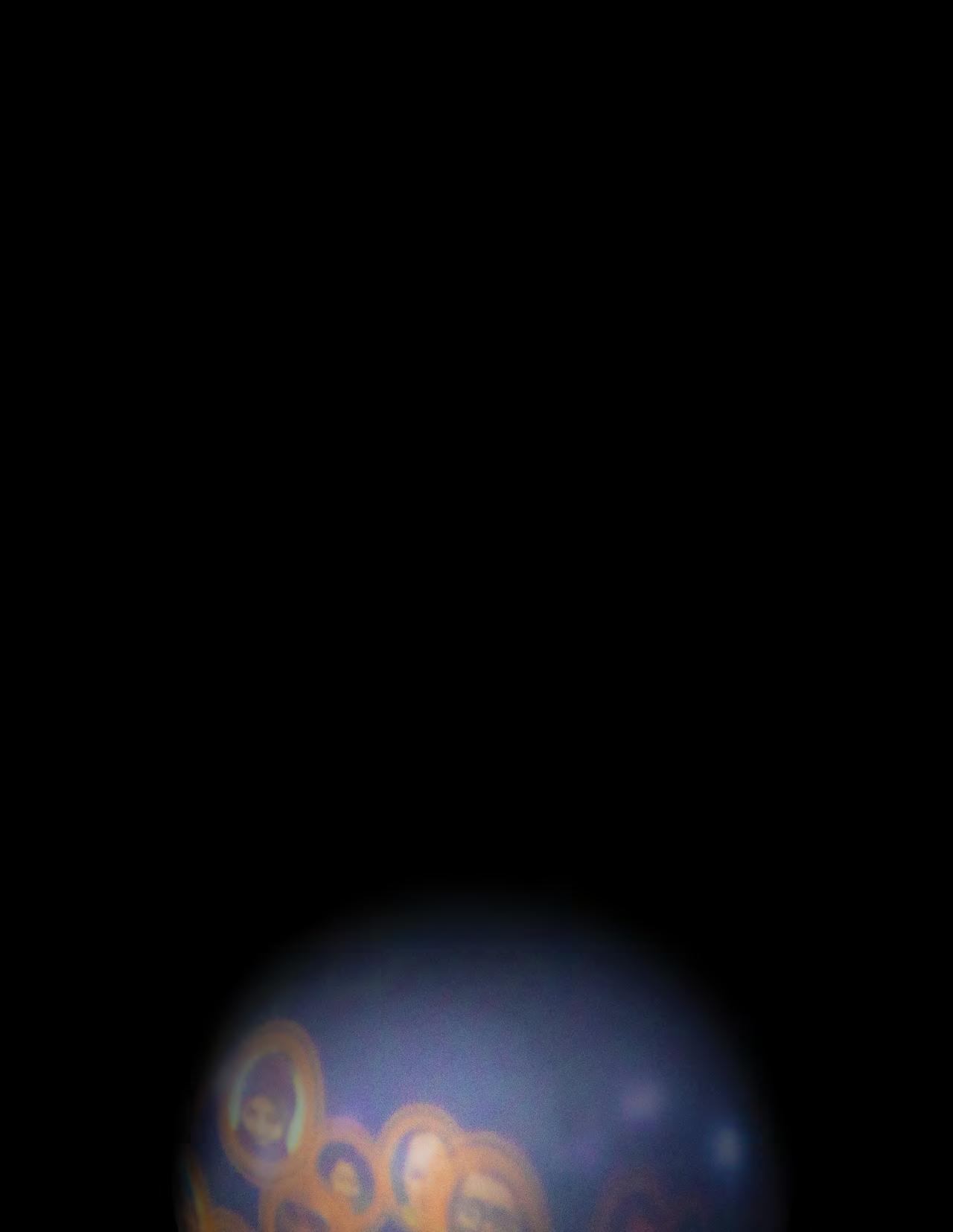 BY DENNIS ARP
BY DENNIS ARP
USING SATELLITE IMAGES AND MASSIVE DATASETS, PROFESSOR HESHAM EL-ASKARY AND THE PH.D. STUDENTS IN HIS REMOTE-SENSING LAB UNEARTH INSIGHTS THAT COULD SHAPE CLIMATE CHANGE POLICY ACROSS CALIFORNIA AND AROUND THE GLOBE.
Professor Hesham ElAskary discusses the work of his Chapman lab with Congressmember Lou Correa.
F rom drought and flood risk in California to extreme temperatures and desertification in the Middle East, the research of Chapman University Professor Hesham El-Askary crosses just about all geographic regions, reflecting the global scale of climate change.
Yet, the bulk of the work he does with his team of Ph.D. students takes place behind a bank of computer screens in a basement lab at Hashinger Science Center.
Such is the nature of the remote-sensing technology used by the team. Satellites and powerful computers capture huge datasets that the team combs through and interprets, using sophisticated tools of data mining, artificial intelligence and machine learning.
“Our lab is thriving at the interplay of data science and earth observation,” says El-Askary, a professor of computational and data science who leads Chapman’s Earth Systems Science and Data Solutions Lab. “Our work is very much applied research on things that are happening all around us. We study natural disasters and phenomena driven by humans that can have a drastic impact on a local, regional and global scale.”
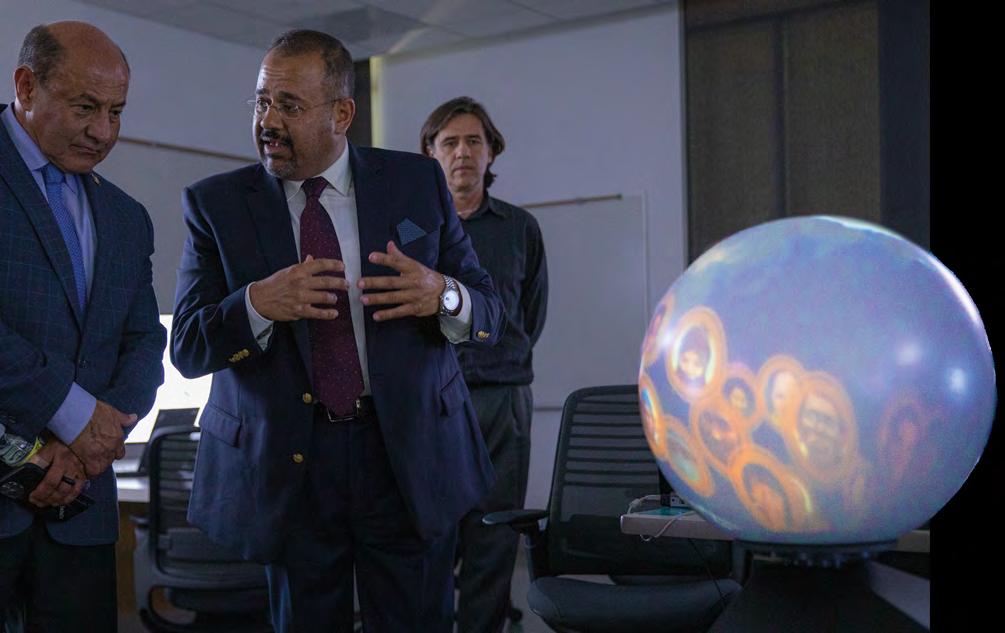
Recently, the lab’s work got a huge boost as Congressmember Lou Correa delivered a $1 million federal grant that expands the team’s research opportunities. In addition to California’s current drought and the huge wildfire risk that comes with it, areas of research include the impact of aerosols on the retreat of Sierra Nevada glaciers as well as the salinity of the state’s soils in agricultural regions.
“Droughts and climate change are having a significant influence on agricultural production in California, and every Californian is feeling the effects,” Rep. Correa said during a visit to the lab in April. Correa represents the 46th congressional district, which includes the Chapman campus in Orange.
“Professor El-Askary and Chapman have established scientific and mapping capabilities with the potential to become a geoscientific classification system that is universally applicable in response to these crucial concerns,” Correa added.

“This lab’s outstanding work is vital in combating climate change and ensuring that our community establishes a permanent research center dedicated to addressing global problems.”
The student lab team of Professor El-Askary, top right, includes, clockwise from front, Eric Adams, Shahryar Fazli, Niko Grisel Todorov, Sachi Perera and Rejoice Thomas.
WORK IS VITAL IN COMBATING CLIMATE CHANGE.“

“ THIS LAB’S OUTSTANDING
– Congressmember Lou Correa
FALL 2022 19
HAVING A VOICE AT UN CLIMATE CONFERENCE
This is a particularly impactful year for El-Askary and the Chapman students who assist him in the Earth Systems Science and Data Solutions Lab. Through their collaborations on international research work, including in North Africa, the Middle East and the Balkans, the team has been preparing to help influence discussions and global policymaking during the UN Climate Change Conference 2022 (COP 27) this November in Sharm El-Sheikh, Egypt.
Previously, El-Askary, an Egyptian native, helped develop the first analytical solar Atlas of Egypt – now considered the official document of the Egyptian government for solar investment.
“Hesham has an extensive international partnership network and devotes a lot of energy building bridges that demonstrate the benefits of science and technology to the rest of the world,” said Ghassem Asrar, former director of the World Climate Research Program and currently senior vice president for science at the Universities Space Research Association. “He’s also a rare breed of scientist willing to work closely with the private sector to ensure that solutions we identify and develop benefit society.”
Also among the beneficiaries of El-Askary’s collaborative approach are the five Ph.D. students in his Chapman lab. There, the student researchers get a chance to take the lead on projects, mentored not just by El-Askary but also by renowned scholars like Erik Linstead, principal investigator of Chapman’s Machine Learning and Affiliated Technologies (MLAT) Lab; Joshua B. Fisher, who worked at NASA’s Jet Propulsion Laboratory and was lead scientist for a mission on the International Space Station before coming to Chapman as Presidential Fellow in Ecosystem Science; and Chapman President Daniele C. Struppa, an internationally recognized mathematician and researcher.
The student researchers in the lab include Shahryar Fazli (Ph.D. ’22), who works on issues of food security and resource management, and Rejoice Thomas (MA ’20, Ph.D. ’23), who uses satellite imagery to predict crop yields and detect ocean plastics.
Thomas is also part of a lab team studying sea level rise on the coastline of Alexandria, Egypt, and another led by El-Askary examining the structural integrity of a massive dam project on the Nile in Ethiopia.
“It’s exciting to work on projects that refine data science techniques and merge science with policy so we can get results that best serve society,” Thomas said.
S HARPENING THEIR FOCUS TO ASSESS LOCAL RISKS
Niko Grisel Todorov (Ph.D. ’23) previously developed software for Fortune 100 companies and assessed the risks of natural hazards for the Federal Emergency Management Agency (FEMA).
Now, he’s adapting global research models and applying them to central Orange County, assessing earthquake risk and considering what essential facilities might get damaged in the event of a 500-year flood.

“The global model is like drawing with a crayon, and now we’re sharpening our pencil and fine-tuning our focus to look at a smaller area,” Todorov said.
Assisting that sharpening are Sachi Perera (Ph.D. ’23) and Eric Adams (Ph.D. ’23), who are developing specialty skills in AI and machine learning that can be applied across the team’s panoply of projects.
“AI is the concept – designing an intelligent machine – and machine learning implements what we learn from the AI architecture,” explained Adams.
The lab team is considering local and global risks associated with climate change, including possible damage in the event of a 500-year flood.
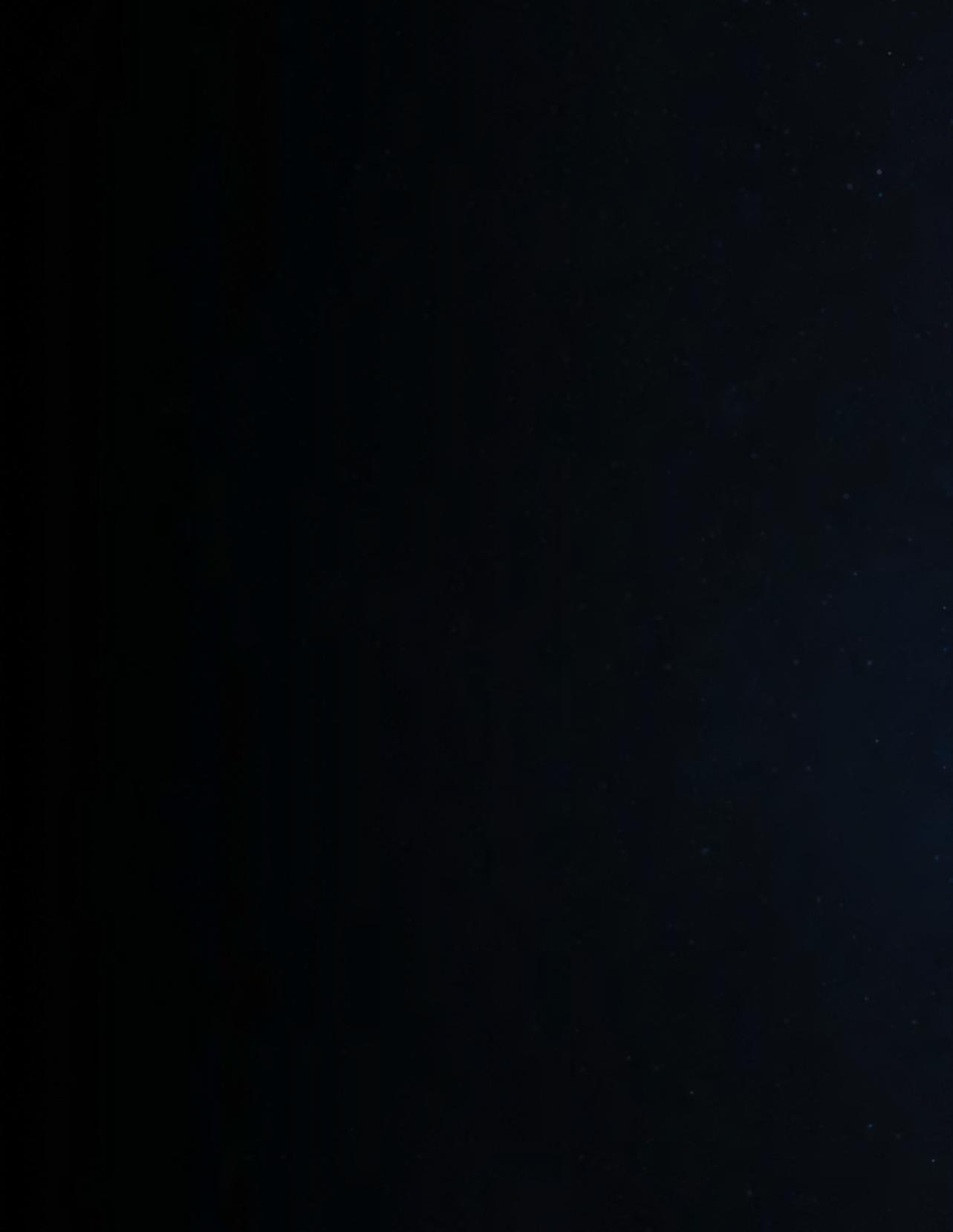
20 CHAPMAN UNIVERSITY MAGAZINE
With such cutting-edge tools, it’s possible to determine the cause of past environmental events, Adams noted.
“We are looking at the impact of climate change, but to detect that impact, you need to look into the history,” he said.
Currently, the entire lab team is working on a major report on climate impact in the Persian Gulf Region, in collaboration with the World Bank and the Arab League.
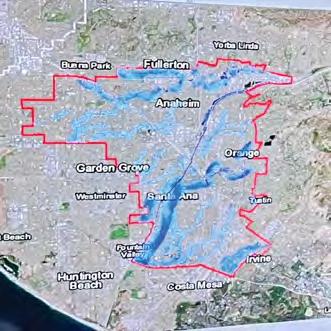
“Everyone is eager for these findings because the Gulf Region is among the areas that will be affected most dramatically by climate change in the years ahead,” El-Askary said.
As the effects of climate change continue to manifest globally and locally, the Earth Systems Science and Data Solutions Lab has a chance to develop a growing number of research projects that inform policy at all levels of decision-making.

From satellites in space to a basement lab at Chapman, the insights and impact are just beginning to resonate.
“It’s evident that the world is witnessing a global change, and the intersection between earth observation and data science is critical to mitigating and adapting to that change,” El-Askary said. “With the advancements in our lab, we’re prepared to lead in this area.”
“ THE WORLD IS WITNESSING A GLOBAL CHANGE, AND THE INTERSECTION BETWEEN EARTH OBSERVATION AND DATA SCIENCE IS CRITICAL TO MITIGATING AND ADAPTING TO THAT CHANGE.”
– Hesham El-Askary, Ph.D.
FALL 2022 21
CROSSI NG THE BORDER,

BUILDIN G A B RIDGE
22 CHAPMAN UNIVERSITY MAGAZINE
BY STACE DUMOSKI
In 2019, Nancy Rios-Contreras was doing research with migrants at the border in Tijuana, Mexico, when someone walked into a Walmart in El Paso, Texas, and murdered 23 people.
When Rios-Contreras heard the news, she was with a man from Nicaragua, a father who had already traveled thousands of miles in perilous conditions in hopes of finding a safer home for his family.
But the rise of gun violence in the U.S., especially violence perpetrated against immigrants and people of color, left him wondering if trying to cross the border was the right choice. “Is it worth it?” he asked her.

Rios-Contreras, an assistant professor of sociology at Chapman University, has been studying the dynamics of the migrant community in Tijuana since 2018, when migrant caravans at the U.S.-Mexico border started to dominate U.S news and political discourse.
“Tijuana is a beautiful city,” Rios-Contreras says. “There are migrant communities from all over the world there – people who have tried to reach the United States. Unfortunately, they’re not able to complete the journey because of U.S. policies. So now they’re in Tijuana, building community. You have people who have opened businesses. You have people who have been forced to acquire skills and to learn Spanish. So I think it’s a very beautiful community as well.”
But that beauty is often masked by the city’s reputation as the most dangerous city in the world, based on homicide statistics. RiosContreras’ goal is to get past the community’s alarming statistics and reveal the complex human stories underneath.
Her research, supported by a grant from Chapman’s Scholarly Creative Fund, has allowed her to distribute cameras to individuals within the community, giving migrants the opportunity to document their own stories without the intrusive lens of an outside researcher.
By collaborating directly with migrants and asylum seekers, RiosContreras has started to build a holistic and more accurate portrait of their lives and of the complex, diverse community that has emerged at the Tijuana border.
RESEARCH BY CHAPMAN PROFESSOR NANCY RIOSCONTRERAS PROVIDES A VIVID PORTRAIT OF MIGRANT LIFE AND ADDS DEPTH TO THE EXPERIENCE OF HER STUDENTS.
UNDERSTANDING A COMPLEX COMMUNITY
“When I started my research, it was mostly migrants from Central America who were coming – from Honduras, El Salvador, Guatemala – to Tijuana in order to reach the United States,” she says.
Over time, though, the migrant population in Tijuana has shifted. Along with the Central American migrants, there are an increasing number of Haitian migrants, stemming from the 2010 earthquake in Haiti, and most recently, refugees from the war in Ukraine. In addition to people who are trying to come into the U.S. for the first time, there are those who have already been in the U.S. and were deported back to Mexico, as well as asylum seekers who, under the Migrant Protection Protocols, are being returned to wait in Mexico on the outcome of their appeals.
THE VIOLENCE OF WAITING
Rios-Contreras, a criminologist by training, understands how trauma manifests in the migrant experience. People who have faced physical, emotional and psychological violence in their home countries – extortion, kidnapping, violent crime – must endure another kind of violence once they reach the border and are forced to wait.

“It’s a very difficult experience, especially for women who bring children and for people of different sexualities,” says Rios-Contreras, noting that Mexico perpetuates many patriarchal values. Men might try to find work, but without documentation they can only work illegally. Children are unable to attend school. Migrants often also face violence from Mexican authorities.
It’s no wonder that some people attempt the border crossing without authorization. The trip carries risks, whether migrants cross through the desert or by swimming north through the Pacific Ocean.
During one of Rios-Contreras’ most recent trips to the border, a migrant crossed at the site where she was working. “The whole community sort of stopped,” she says. “There was a pause in the air, just observing a migrant crossing the wall through undocumented means. And then the Border Patrol came and detained the person as they were trying to claim asylum.”
Recently, migrants in Tijuana from Central and South America and Haiti have been joined by refugees from the war in Ukraine, as they all wait to gain entry to the U.S.
Forced to wait on the bureaucracy of the U.S. immigration system to gain legal entry into the country, most migrants reside in shelters and tent cities, operated by religious groups or by the government, often with limited facilities and without access to adequate health care and education. Most cannot afford legal representation to guide them through the system, and even if they find pro bono representation, the rate of approval for asylum is very low.

More than once, Rios-Contreras has had participants tell her that their first encounter with the United States was with a border enforcement officer pointing a gun at them. “Gun violence is one of the reasons why they left their country in the first place. They’ve traveled thousands of miles, whether walking, through car rides, through bus rides, through flights to get to Tijuana, where they finally crossed the border into the United States. The first welcome that they get is an official pointing a gun at them,” she says.
“I had a mother who told me that she was scared for her children. She really thought the border enforcement officer was going to shoot her children and her. Then the question becomes, was this migration worth it?” says Rios-Contreras.
24 CHAPMAN UNIVERSITY MAGAZINE
TEACHING ABOUT VIOLENCE, UNDERSTANDING HUMANITY
Chapman is just over 100 miles from Tijuana, which makes it an ideal location for the study of the migrant communities that live there, not just for faculty members like Rios-Contreras but for students as well.
“Part of my research also has to do with understanding violence and teaching my students at Chapman University how we do that in an ethical way,” says Rios-Contreras. “How do we go and study people in their most unfortunate place in life? How can we understand their experience with a little bit of humanity as a researcher?”
In spring 2022, a speaker series brought migrant-rights defenders to campus virtually, and students from her “Refugees and Migration” course participated in a field trip to the border crossing station in San Ysidro, where they witnessed first-hand the physical barriers that stand between would-be immigrants and the U.S.
Dr. Nancy Rios-Contreras (left), assistant professor of sociology, accompanied Montserrat Buegno (MA ’22) and Socrates Mbamalu (MA ’23) on a visit to the San Yisidro Border Crossing as part of the “Refugees and Migration” course.

“It was important for me to see … this border that has been talked about for so long, what it represents and looks like,” says Socrates Mbamalu (MA ’23), a graduate student in the Chapman War & Society program. Mbamalu was surprised by the immensity of the physical barriers separating the U.S. from Mexico. An immigrant from Nigeria, he has often traveled across borders in West Africa, but he has never seen anything comparable, he says. “You can’t just get into the U.S. You have to show a valid reason for your existence,” he says.

“As an immigrant, I don’t like being at the border,” says Montserrat Bugueno. (MA ’22), who is originally from Chile. Bugueno has made the border crossing at Tijuana multiple times with her family to renew visas. “It’s very nerve wracking. I don’t like it. I know that I have everything to be here legally. It’s just the fact that when you’re there, when you are not American, they make you feel that you’re not American,” she says.
Rios-Contreras hopes that the course and class trip are just the first steps to helping Chapman students take advantage of the university’s proximity to the border. “I think in terms of internships, volunteer opportunities or just class field trips. I really want to develop this relationship, and just symbolically build a bridge between Tijuana and Chapman University.”
“HOW DO WE GO AND STUDY PEOPLE IN THEIR MOST UNFORTUNATE PLACE IN LIFE? HOW CAN WE UNDERSTAND THEIR EXPERIENCE WITH A LITTLE BIT OF HUMANITY AS A RESEARCHER?”
- NANCY RIOS-CONTRERAS, PH.D.
FALL 2022 25
ONCE A PANTHER, ALWAYS A PANTHER
You Home, No Matter Where You Are.
connected to your Chapman Family through unique opportunities to share, interact and grow together. Whether you want to recapture old memories or create something new, your fellow Panthers are here to celebrate!
GET INVOLVED Happy Hours and Networking Receptions, Homecoming, Winterfest, Mimosa Brunch, Speaking Engagements, Alumni Alley, Mentoring, Boards and Committees
GET DISCOUNTS
Baseball tickets, South Coast Repertory, Ayres Hotel and many more, locally and nationally
GET CONNECTED Alumni Association, Black Alumni, APIDA, Hispanic/Lat i nx, 50 Year Club, First-Gen, Regional Associations, Young Alumni





USE YOUR CHAPMAN.EDU EMAIL FOR LIFE!
YOUR BUSINESS

Welcoming
Stay
Find out more: Chapman.edu/alumni
HC A P M A N U N I V E R S I T Y A L U M N I A S S OC I AT I ON
ADD
to our Chapman Family-owned business directory.





Your Career Connection For Life. No matter where you are in your professional journey, Chapman’s Career Team is here to help you navigate your next step. Access complimentary services including personalized advising, online tools and valuable resources for lifetime career navigation. Find out more: Chapman.edu/career CAR E E R A N D P R O F E S S I O N A L D E V E L O P M E N T ON-DEMAND RESOURCES Industr y Resume Templates, Cover Letter Samples,Videos, Guides, Tips, Diversity Resources, Networking Groups and more TALENT PIPELINE SERVICES Think Chapman First and hire fellow Panthers to join your organization –we'll help you recruit Chapman talent CAREER TOOLS AND TECH Job Portal, Industry Guides, Virtual Mock Interviews, International Resources, Financial Literacy and more EMPLOYER CONNECTIONS Career Fairs, Job Leads, Information Sessions, Industry Panels and more 1:1 CAREER ADVISING Job Search Strategy, Resume and Cover Letter Review, Interview Prep, Networking Skills and more Career and Professional Development
Brewing Possibility
BY DENNIS ARP
FOR FOOD SCIENCE STUDENTS, LEARNING IS ANYTHING BUT A GRIND, THANKS TO THE MENTORSHIP AND CAMARADERIE OF THE CHAPMAN COFFEE CLUB.

28 CHAPMAN UNIVERSITY MAGAZINE
During his seven years as an Army food safety officer, Eric DeGuzman (MS ’23) stomached more mess hall coffee than he can measure. The stronger and more bitter the taste the better.
Now he admits that he didn’t know beans about how rewarding the coffee experience can be.
DeGuzman and others in the Chapman MS Food Science program have been going through a coffee boot camp of sorts during their graduate studies at the university. Working with cutting-edge equipment as well as faculty and industry mentors, a growing student community
is learning about both the science and art of coffee, thanks to class study, lab work and now the camaraderie of the Chapman Coffee Club.
From the sustainable sourcing of beans to the intricacies of the roasting process, from navigating the nuances of flavor profiles to developing and marketing specialty products, the lessons and possibilities continue to pour forth.
“We’re getting people together to spark new ideas, and that’s what innovation is all about,” said Anuradha Prakash, Ph.D., Food Science professor and Coffee Club mentor. “We’re seeing all that can happen when people get together over coffee.”

“We’re seeing all that can happen when people get together over coffee.”
– Anuradha Prakash, Ph.D.
FALL 2022 29








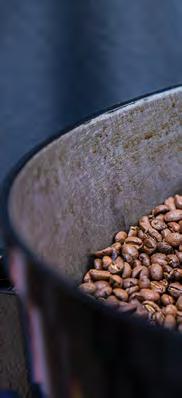
1 5 2 3 6 6
“We’re getting people together to spark new ideas, and that’s what innovation is all about.”
– Anuradha Prakash, Ph.D.
30 CHAPMAN UNIVERSITY MAGAZINE
1 HIGH-END ASPIRATIONS
What better product than coffee to get students excited about the science of food processing? So Professor Anuradha Prakash and the Chapman Food Science Program invested in cutting-edge equipment, including software that allows Coffee Club members to monitor the roasting of beans at the nth degree of temperature and pressure.

2 SHELF LIFE
The support of industry vendors allows the Chapman Coffee Club and co-founder Eric DeGuzman (MS ’23) to source raw beans from a variety of regions in the coffeegrowing world.
3 FROM RAW TO ROASTED
Carefully calibrated roasting can unlock a panoply of flavors rich enough to satisfy the most sophisticated of palates. But it all starts with raw beans that connect the final tasting experience back to the soils and climate of their origin.
4 MMMMMM MMMMMM
As freshly roasted beans swirl in the cooling bin, the enticing aroma of flavorful moments to come wafts across the patio tables outside the Keck Center for Science and Engineering.


5 HANDS-ON LEARNING
“Chapman has given me access to equipment that without this education I wouldn’t be able to interact with every day,” says Coffee Club co-founder McKenna Rivers (MS ’23), who plans a career in food industry product development.
6 CHAPPY HOUR
On Friday afternoons, Coffee Club members share their specialty roasts as well as insights about their process with Chapman students, faculty and staff. “It’s a nice way not only for us to apply what we’re learning in the lab, but to get feedback so we can refine our roasting and brewing methods to be more applicable to what they want,” Rivers says.
7 GROUNDS FOR CELEBRATION
Coffee Club students and their mentors lift a crystal mug to commemorate the thriving community they’re creating.
For enhanced content, including an exclusive video, visit Chapman. edu/magazine/coffeeclub.
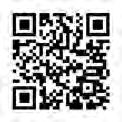
3 4 7 FALL 2022 31
HEALING FOR THELONG HAUL
BY JOY JUEDES
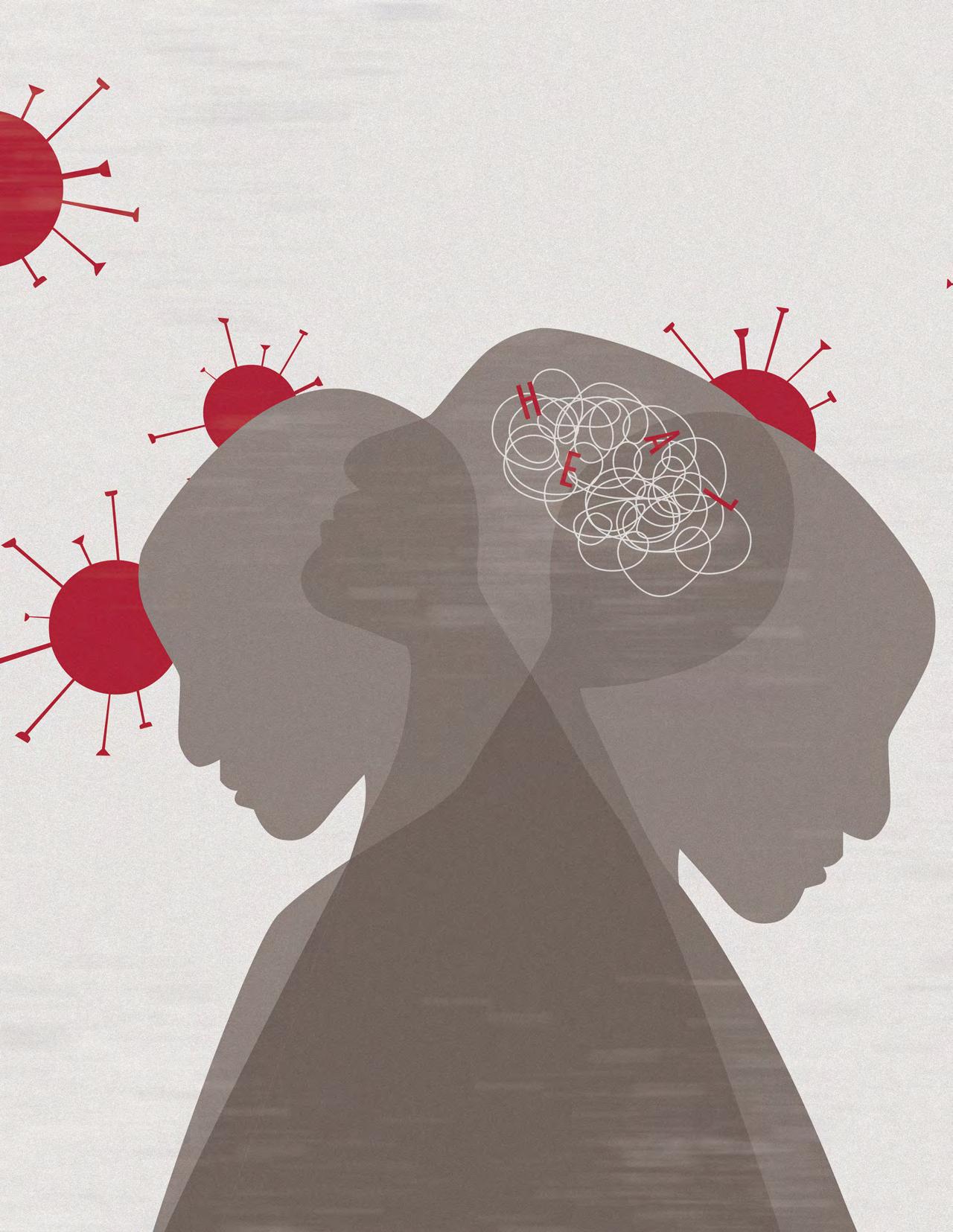
PROFESSOR MARY KENNEDY IS LEADING SPEECH THERAPISTS’ EFFORTS TO HELP PEOPLE SUFFERING LONG-TERM EFFECTS OF COVID-19.
“THEY’RE HAVING TROUBLE WITH STAYING ORGANIZED, REMEMBERING DETAILS AND MEETINGS, THINKING OF WORDS THAT THEY WANT TO USE, BEING FORGETFUL AT HOME.”
- MARY KENNEDY, PH.D.
32 CHAPMAN UNIVERSITY MAGAZINE UP FRONT
Mary Kennedy knows about brain injury. After all, for more than 35 years, she has worked with people to rebuild their cognitive abilities after those injuries.
Now she sees some of the same symptoms after mild brain injuries manifest in patients suffering the lingering effects of COVID-19.
“They’re having trouble with staying organized, remembering details and meetings, thinking of words that they want to use, being forgetful at home,” says Kennedy, Ph.D., professor of communication sciences and disorders at Chapman University.
Leveraging their clinical experience, Kennedy and speech-language pathologist Chantale Hucks are working with sufferers of long COVID to reclaim their lives.
“There are people who are living with some of these symptoms and trying to get back to work, back to school, back into their household duties – and some are really struggling,” says Kennedy, who teaches in the Communication Sciences and Disorders Department at Crean College of Health and Behavioral Sciences.
and management tactics. “We’ve seen very few studies describing the communication problems someone can have after COVID,” Kennedy says.
If people who’ve had COVID have attention or memory challenges, they may forget the details of a conversation with a spouse in the morning, and in the afternoon tell their kids something that’s not accurate because their thinking is jumbled, she says.

“We’re trying to identify those communication problems and any factors that may be related,” Kennedy says.
She and her colleagues are working on evaluation and study protocols for pinpointing impairment and for finding differences, if any, between people who have long COVID symptoms and those who have fully recovered.
– MARY KENNEDY, PH.D.
At Chapman’s clinic, a patient fills out questionnaires and a speech therapist interviews and evaluates them, then coaches them with strategies to help with things like focusing, remembering and finding the word they’re looking for. The therapists address immediate needs and then the person’s long-term goals. The clinic is soon adding a part-time speech therapist.
The Neuro-Deficit Clinic for COVID-19 Survivors, which was initiated by Kennedy and a donation from the U.S. Justice Charitable Foundation, is based at Chapman’s Rinker Health Science Campus in Irvine. The clinic serves people in person and through telehealth. Anyone can seek evaluation and treatment for free.
Under supervision, speech language pathology graduate students are working this fall with people coming to the clinic.
“There aren’t a lot of university clinics that are currently seeing COVID clients with students. It’s exciting that we can start training our students in this,” Kennedy says.
She and Hucks are working in an area still being explored in health care. According to researchers in the November 2021 edition of the journal Pathogens, postCOVID syndrome – now termed “post-acute sequelae of COVID-19” by the Centers for Disease Control and Prevention and National Institutes of Health – does not have clear criteria for its prevention, diagnosis
“They then go about their week trying to use the strategy and then they come back and tell us the extent to which the strategy was useful. Did it work? Was it too much effort? Did they see that this could become a habit?” Kennedy says. “If the answer is, it was too much work, then we explore other strategies.”
Apps and services like Siri and Alexa have proved very helpful for patients trying to get back to normal, she says.
“One of the really positive things we’re noticing is that when people come to us for an evaluation and for assistance, most of them have already put some strategies in place, and we explore the extent to which those strategies are useful and help identify others,” Kennedy says.
She hopes that, in general, society will become less judgmental toward those with brain-related problems.
“I think it’s reached so many people, so hopefully we’ll see an uptick in this kind of empathy,” Kennedy says.
“WE’RE TRYING TO IDENTIFY THOSE COMMUNICATION PROBLEMS AND ANY FACTORS THAT MAY BE RELATED.”
FALL 2022 33
BY DENNIS ARP

NATIONAL RECOGNITION SHINES A LIGHT ON CHAPMAN RADIO, WHERE THE FREEFORM PROGRAMMING CONTINUES TO EVOLVE, BUT THE STRONG SENSE OF COMMUNITY ENDURES.
Sometimes you go to college and you meet your new best friend. Sometimes you find your voice. Bella Gerencser ’24 and Emilie Haskell ’24 came to Chapman University and did both.
They met on a text chain a few months before they got to Chapman, and then the bond became unbreakable when, coincidentally, or perhaps karmically, they ended up living on the same floor of The K residence hall.
As they went the extra mile to meet new classmates during the pandemic, and as they navigated a new world they perceived to be full of smarter and cooler people than they are, Gerencser and Haskell found it comforting to have someone two doors down who just gets it.
Steadily, they found their communities, including Chapman Radio, where they started producing and co-hosting their own show about a week after they met in person. Now, two years later, their creation has been honored as the best college talk show in the nation.
‘YOU’RE NOT LIKE OTHER GIRLS’
That chemistry is evident as, at 9 p.m. on a spring Wednesday, Gerencser and Haskell slip on their headphones and slide behind their mics in Chapman Radio’s Henley Hall basement studio. They seamlessly transition from off-air small talk to riffing on their topic of the day: music they’re embarrassed to admit they like. They laugh often as they share stories full of candor – “just two indie girls navigating a male manipulator world,” as they say in the description of their show “You’re Not Like Other Girls.”
“The more you get to know them, the more it’s clear that they just are not going to tap dance around issues,” says Travis Bartosh, the Chapman radio faculty advisor. “It’s just not in their nature to hold back.

From a podcast and radio standpoint, that’s what we want from hosts. We don’t want them to be filtered, whether we agree with them or not. That’s why we listen.”

In many ways, the experience of Gerencser and Haskell exemplifies what has been in the ether and on the air since Chapman radio first launched more than half a century ago. Give smart, inquisitive students the tools, training and air time, then sit back and listen as they gain their bearings behind the microphone and beyond.
“I like being 100% open and vulnerable – I like being 100% me – and Bella’s the same way,” says Haskell, a junior double majoring in political science and documentary and broadcast journalism. “So we love having Chapman Radio as an outlet, and we’ve found that we have really good radio chemistry.”
something to say we’ve got something to say we’ve got something to say we’ve got something to say we’ve got something to
GIVE SMART, INQUISITIVE STUDENTS THE TOOLS, TRAINING AND AIR TIME, THEN SIT BACK AND LISTEN AS THEY GAIN THEIR BEARINGS BEHIND THE MICROPHONE AND BEYOND.
JUST TWO INDIE GIRLS NAVIGATING A MALE MANIPULATOR WORLD
“IT’S JUST NOT IN THEIR NATURE TO HOLD BACK. FROM A PODCAST AND RADIO STANDPOINT, THAT’S WHAT WE WANT FROM HOSTS... THAT’S WHY WE LISTEN.”
– TRAVIS BARTOSH, PH.D.
“I LIKE BEING ME.”100% “I LIKE BEING ME.” “WHEN
YOU TAKE
A
PEOPLE TO IT.”RISK, RELATE
“WHEN
YOU TAKE
A
PEOPLE TO IT.”RISK, RELATE
100%
Gerencser and Haskell are far from alone in their commitment to the freeform and collaborative ethos of Chapman Radio, which often is ranked among the top 20 college radio stations nationally by the Princeton Review.



On any given day, the greater Henley Hall basement studio space pulses with activity as students not only produce and host their shows but also provide support for other members of the Chapman Radio community.
Stop by and you might meet Reese Velez ’25 (DJ Reese), who’s been performing almost all her life and provides voice coaching for kids. With her show “Asian Fusion,” she amplifies the music and voices of AAPI artists.
Then there’s Ellis Pearson ’22, lead housing assistant at Chapman and contributor to the show “Live From the Henley Hall Basement,” which started this summer as a mix of music, talk and news.
And don’t miss a chance to get to know Natasha Young ‘25, creator of the show “The Fisheye Forecast,” which draws inspiration from live radio theatre of the 1930s, with powerful threads of surreal scifi psychological horror comedy and elements of Grimm’s Fairy Tales woven in for good fun.

we’ve
36 CHAPMAN UNIVERSITY MAGAZINE
we’ve got something to say we’ve got something to say we’ve got something to say we’ve got something to say we’ve got something to say we’ve got something to say wev’ve got something to say we’ve got something to say we’ve got something to say we’ve got something to say we’ve got something to say we’ve got something to say we’ve got something to say we’ve got something to say we’ve got something to say we’ve got something to say we’ve got something to say we’ve got something to say we’ve got something to say we’ve got something to say we’ve got something to say we’ve got something to say we’ve got something to say we’ve

STUDENT PRODUCERS EARN THE LICENSE TO EXPLORE



You’re also likely to bump into Bartosh. While students create the programming and staff the station, he provides the mentorship as program advisor in the Chapman School of Communication. The school offers classes, workshops and other training for students interested in joining the Chapman Radio community.

“Students take the class one semester so they get trained and get comfortable in the studio,” Bartosh says. “They have to earn what’s called their broadcast license, and once they do, they roll over into being a Chapman Radio club member and they have access to do their show each semester if they want.”
Bartosh is a great ambassador for Chapman Radio. He’s eager to show visitors and new student talent the $30,000 industry-quality sound board in the studio – a space he gutted and rebuilt during the down time of the pandemic, with advice and hands-on help from Mike Boyle, a producer of Angels baseball broadcasts on AM 830 KLAA.
The space mirrors professional studios, “and our ability to livestream also is incredible,” Bartosh says. “We built this from scratch – we don’t use any third-party resources, which a lot of college stations do.”





“WE BUILT THIS [STUDIO] FROM SCRATCH – WE DON’T USE ANY THIRD-PARTY RESOURCES, WHICH A LOT OF COLLEGE STATIONS DO.” – TRAVIS BARTOSH
Chapman Radio faculty advisor Travis Bartosh, Ph.D., at left in the photo below, is a great ambassador and historian for the program.
A $30,000 sound board helps students prepare to succeed in the radio and podcast industries.
say we’ve got something to say we’ve got something got something to say we’ve got something to say we’ve got something to say we’ve got something to something to say we’ve got something to say we’ve got something to say we’ve got something to say we’ve got something to
Bartosh also makes sure that students know the historical foundation on which the current program is built.
Chapman Radio began in 1967, when students founded an over-the-air station (KNAB AM 890) in a control room that they created by converting a coat closet. From the beginning, “the leadership was the students,” one of the co-founders, Rick Eisleben ’69, recalled in 2015.
That student creative control over programming has endured as the station has converted from over–the-air to live streaming, at chapmanradio.live.


Eisleben is among the alumni who have built careers out of their Chapman Radio experience. Instead of becoming a minister, as he had planned, Eisleben created his own film and TV production company, working largely with faith leaders and their communities.
Other graduates of the program include Ken Bunt ’93, now president of Disney Music Group; Jeff Levering ’05, TV and radio broadcaster for the Milwaukee Brewers; Cameron Louis ’13, executive producer for iHeartMedia and TV producer of “The Woody Show”; and Caroline Brown ’21, a board operator at iHeartMedia.
Often those alumni return to speak with students about careers in media and music. Brown says that by the time she graduated, she was convinced of the rewards.
CHAPMAN RADIO ‘CHANGED MY LIFE PATH’
“I love talking with people, and I love the connection radio provides,” she says. “Getting to hang out with these great people all the time and share my passion for music made the Chapman Radio experience stand out. It changed my life path.”
For Gerencser and Haskell, the benefits of their experience include the technical and practical – they know how to run a soundboard, upload episodes of their weekly show to podcasting websites and promote their show via social media.
The experience also gives them a leg up within their disciplines. As a screenwriter, Gerencser listens to past shows with an ear for authentic dialogue. “It’s useful that for an hour Emilie and I are constantly going back and forth,” she says.
“GETTING TO HANG OUT WITH THESE GREAT PEOPLE ALL THE TIME AND SHARE MY PASSION FOR MUSIC MADE THE CHAPMAN RADIO EXPERIENCE STAND OUT. IT CHANGED MY LIFE PATH.”
– CAROLINE BROWN ‘21
38 CHAPMAN UNIVERSITY MAGAZINE
DID WE JUST HEAR THAT RIGHT?” “WAIT,
Still, it’s the interpersonal rewards that make their show a passion project.




“I’ve had people tell me, ‘It’s nice listening to you guys because it feels like I’m talking with siblings or best friends back home,’” Gerencser says. “That’s something I really value – I’m very happy about that.”
Of course, it was also a nice perk when the Intercollegiate Broadcasting System recognizes your work as the Best Talk Program in the nation.
The awards are usually handed out in New York, but since the pandemic hit, the ceremony has been held online. There were some connectivity issues this year, so when the award announcement was made, it was a “wait, did we just hear that right?” kind of a moment for Gerencser and Haskell. They celebrated with some ramen.
But that’s OK, they say, because in the end it’s about the show, their friendship and the community.

“I make the joke about awards that they ensure Bella has a reason to hang out with me once a week,” Haskell says with a smile. “We went from being neighbors, to working on this show, to moving in together. It’s really lovely to have that chart of a relationship.”
And the show? What does the national award say about “You’re Not Like Other Girls”?
“A lot of people just really want to feel at home,” Haskell says. “That’s something Bella and I are really good at. Not only in radio, but in our everyday lives.”
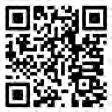
to say we’ve got something to say we’ve got
“A LOT OF PEOPLE JUST REALLY WANT TO FEEL AT HOME. THAT’S SOMETHING BELLA AND I ARE REALLY GOOD AT. NOT ONLY IN RADIO, BUT IN OUR EVERYDAY LIVES.”
–
EMILIE HASKELL ’24
What’s on Chapman Radio? Scan here to give it a listen.
FALL 2022 39
BY DENNIS ARP
PUTS CHAPMAN AT THE CUTTING EDGE OF
C

hapman’s commitment to research in artificial intelligence and the data sciences is more powerful than ever. That’s because the university’s students and faculty researchers now have at their fingertips one of the fastest supercomputer clusters in the region.
The new computer system, capable of performing 8 quadrillion calculations a second, is the product of Chapman’s participation in the CEO Leadership Alliance of Orange County, a working group that includes executives at some of the most influential high-tech companies in Orange County.
Video graphics giant Nvidia Corp. donated the computer cluster to advance the shared goal of preparing more students from underserved communities and to help ensure that the region’s tech workforce is ready to thrive at the cutting edge of AI advances.
Keith Strier, vice president of worldwide AI initiatives for Nvidia, told the Orange County Business Journal that the donation of hardware Is “the first community-operated supercomputer” in the nation.
“We’re excited to be a part of it,” he added.
Chapman is equally enthusiastic as it prepares students to work with next-generation technology and provides research expertise that feeds “a huge tech startup ecosystem here in Orange County,” said Andrew Lyon, dean of Chapman’s Fowler School of Engineering.
“This kind of computing power allows us to ask research questions that couldn’t be attacked previously.”
The new supercomputer, which is being installed in the Beckman Hall data center, was expected to be at least partially online before the start of the fall 2022 semester.
“This is a different computer paradigm, so
there’s going to be a learning curve,” Lyon said. “That learning will happen as we finish our infrastructure upgrades, and then we’ll be off to the races.”
The choice of Chapman for the supercomputer cluster speaks to the university’s ambitions and “how important it is to address the big research questions with the broadest collection of scholars,” Lyon added. “These types of facilities have their own gravitational pull, bringing in people excited to work with massive amounts of data and extraordinarily sophisticated algorithms so they can do big things.”
Erik Linstead ’01 is one of those scholars working with massive datasets. The senior associate dean at Fowler Engineering and principal investigator of Chapman’s Machine Learning and Affiliated Technologies (MLAT) Lab cited research in pharmaceuticals to illustrate how the new computer will help facilitate advances across academic disciplines.
“When you look at what’s going on in drug discovery right now, no one starts with in vivo research anymore – they do it in silico first, because it’s so much cheaper to simulate before you do anything in the lab,” Linstead said. “So, yes, in general I think the data sciences are an extremely interdisciplinary field.”
As the new computer supercharges Chapman’s research aspirations, it also strengthens the university’s links to the community it serves, says Chapman President Daniele C. Struppa.
“Two of the founding principles of the Fowler School of Engineering were to broaden access to engineering education and to deepen our ties to our local community and industry,” Struppa said. “This collaboration will achieve both of those goals while simultaneously accelerating our push into AI, machine learning and cutting-edge data science research.”
THE SYSTEM CAN PERFORM 8 QUADRILLION CALCULATIONS A SECOND, ALLOWING RESEARCHERS TO APPLY SOPHISTICATED ALGORITHMS TO HUGE AMOUNTS OF DATA.
“This kind of computing power allows us to ask research questions that couldn’t be attacked previously.”
- Andrew Lyon, Ph.D.
SUPPORTING STUDENT MENTAL HEALTH
BY DENNIS ARP
F or Chapman educational studies professors Amy Ardell and Michael Hass, it was a moment of clarity. Hass was guest lecturing in Ardell’s class of student teachers, and the moment the discussion turned to student mental health issues, the stories started flowing.
A high school student teacher told of a youngster who had just come out as gay to their family, and the family kicked them out of the house.
“What do I do?” the teacher asked.
A third-grade teacher offered background on a student who had an incarcerated parent, sharing that sometimes the student would bolt from the class right in the middle of a lesson.
“How do I help him?” she asked.
“After three hours of all these questions and all the stories about what they’d seen, it was clear that we needed to give teachers a bit of a mental health primer,” said Ardell, Ph.D., instructional assistant professor in the Attallah College of Educational Studies at Chapman University.
Now that book is available. Hass and Ardell have co-authored “Supporting Student Mental Health: Essentials for Teachers,” a guide to the basics of identifying and supporting students with mental health challenges.
The class discussion that inspired their book is certainly not the only evidence of an acute need for advice and strategies to help teachers cope with what many educators are calling a crisis of mental health in the classroom.
CDC RESEARCH DATA ‘ECHO A CRY FOR HELP’
A report on high school students released in March by the U.S. Centers for Disease
Control and Prevention (CDC) shows how the stress of the COVID-19 pandemic has made a bad situation worse.
The data, collected in 2021, show that 44% of students surveyed felt persistently sad or hopeless during the past year, with more than 55% saying that they experienced emotional abuse by a parent or other adult in the home.
“These data echo a cry for help,” said CDC official Debra Houry, MD.
Ardell and Hass hope their book will help get resources to those who now recognize the need to seek them out.
“Now the problem is inescapable, even for people who might not have paid attention to it before,” said Hass, Ph.D., professor of scholarly practice in Attallah College as well as a school psychologist, licensed educational psychologist and clinical counselor.
BUILDING A SUPPORTIVE LEARNING ENVIRONMENT
A big part of the authors’ message is that when teachers set up a healthy classroom environment and “do other things they think are for academic purposes, those things are also good for mental health purposes,” said Ardell, Ph.D., who has expertise in teacher education and is a former elementary school teacher.
A supportive classroom culture fosters relationships that sustain people when they’re struggling mentally and emotionally, the authors emphasized.
“That supportive environment allows people to be vulnerable and to ask for help,” Ardell said.
“Relationships are so fundamental to being human that they can literally make
everything better or everything worse,” Hass added. “I always say to students in my counseling classes that students don’t have to love you, they just have to trust you.”
With that bond in place, teachers are better prepared to absorb sometimes startling revelations without immediately rushing the student up to the office.
“We want [teachers to] have a supportive conversation and then use that as a bridge to connect the student to more specialized help,” Hass said.
‘A HEALTHY TEACHER MEANS HEALTHY KIDS’
In their last chapter, the authors focus on self-care for teachers.
“It’s using our own relationships to support and sustain us, because we know that a healthy teacher means healthy kids,” Ardell said. “This year has been incredibly stressful on many of our colleagues in the field.”
The wider community needs to ensure that teachers are feeling connected and valued in meaningful ways that go beyond cards and gifts during Teacher Appreciation Week, Ardell added.
“We, as a society, need to commit to protecting educators’ well being, and we need them to know that they don’t have to wear four hats,” she said.
“We want to help teachers make a smooth and intentional hand-off to a mental health professional, then go back to making sure their classroom is welcoming, culturally responsive and safe. Those are the things kids need most to support their mental health.”
PROFESSORS MICHAEL HASS AND AMY ARDELL COUNSEL EDUCATORS
ON HOW TO COPE WITH CRISIS LEVELS OF STRESS IN THE CLASSROOM.
“I ALWAYS SAY TO STUDENTS INMY COUNSELING CLASSES THATSTUDENTS DON’T HAVE TO LOVE YOU,THEY JUST HAVE TO TRUST YOU.”
- MICHAEL HASS, PH.D.
FALL 2022 41 BOOKSHELF
BROWSE THE CHAPMAN BOOKSHELF
NEW RELEASES REFLECT THE BREADTH AND DEPTH OF CHAPMAN FACULTY MEMBERS’ SCHOLARSHIP.
How the World Became Rich: The Historical Origins of Economic Growth

Jared Rubin, Ph.D., professor and co-director of the Institute for the Study of Religion, Economics and Society; with Mark Koyama, Ph.D. | Polity Press
Through the lenses of geography, politics, culture, demography and colonialism, Rubin and Koyama explore how wealth has grown throughout history, with most human wealth gained in the last two centuries.
The Ethics of Capitalism:An Introduction

John Thrasher, Ph.D., associate professor of philosophy; with Dan Halliday, Ph.D. | Oxford University Press Thrasher and Halliday apply classical political philosophy to answer the question: Can capitalism have a moral foundation?
The Secret Syllabus: A Guide to theUnwritten Rules of College Success

Terence Burnham, Ph.D., associate professor of finance; with Jay Phelan, Ph.D. | Princeton University Press
The unwritten rules of thriving in college through storytelling from their own experiences with students and practical tips.
Philosophy, Politics, andEconomics: An Introduction
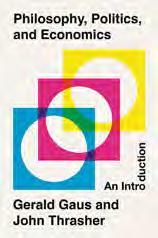
John Thrasher, Ph.D., associate professor of philosophy; with Gerald Gaus, Ph.D. | Princeton University Press Thrasher and Gaus introduce the analytical tools for studying social and political issues.
The Extraordinary Life of Foreign Language Learners

Federico Pacchioni, Ph.D., chair of Italian studies; with Gian Marco Farese | Carocci Pacchioni and Farese explore the complexities of the foreign language-learning experience, its deeper rewards and its important implications for intercultural communication and mediation.
Research Advances in ADHD and Technology

Franceli L. Cibrian, assistant professor of computer science, Ph.D., with two coauthors | Morgan & Claypool Publishers Historic and state-of-the-art technology aimed at supporting people diagnosed with ADHD.
Everyone Wins!: The Evidence forFamily-School Partnerships andImplications for Practice

Stephany Cuevas, Ph.D., assistant professor of education; with four co-authors | Scholastic In this guide, Cuevas and co-authors argue that engaging students’ families can enhance student achievement, strengthen families, boost teacher effectiveness and build community.
Chasing Bugs

Leah Beekman, Ph.D., assistant professor, communication sciences and disorders; with illustrations by Alice Premeau ’22
Beekman uses her experience as a speech pathologist to teach kids about diversity using the character of a cat, Lefty, who meets a variety of bugs.
42 CHAPMAN UNIVERSITY MAGAZINE BOOKSHELF
Animal Behavior and Parasitism

Patricia C. Lopes, Ph.D., assistant professor of biological sciences, with three co-authors | Oxford University Press
Lopes and her co-authors examine how different kinds of animals behave to avoid infection.
Liberating Mindfulness:From Billion-Dollar Industryto Engaged Spirituality

Gail Stearns, Ph.D., associate professor of religious studies | Orbis Stearns argues for liberating mindfulness from its current status as a tool of consumerism and individualism, imagining new possibilities for ethical and spiritual practice.
Mad Diary ofMalcolm Malarkey

Mark Axelrod, Ph.D., professor of comparative literature | Dalkey Archive Press
This latest work of fiction by Axelrod is a post-modern black comedy written from the point of view of a smalltown English professor.
Homeland Insecurity: Terrorism,Mass Shootings and the Public

Ann Gordon, Ph.D., associate professor of political science; with Kai Hamilton Gentry ’18 | Routledge
Gordon and Gentry delve into how Americans can ensure their own security when a mass shooting and/or terrorist attack happens.
Federal Courts, AContemporary Approach
Celestine Richards McConville, JD, professor of law | West Academic Publishing Co. McConville and two co-editors address traditional federal courts issues in this interactive casebook.

Parasocial Romantic Relationships:Falling in Love With Media Figures

Rebecca Tukachinsky Forster, associate professor of communication studies, Ph.D. | Lexington Books
Tukachinsky Forster analyzes how people develop romantic feelings toward people they “know” from the media, including fictional characters.
Apoyo Sacrificial, Sacrificial Support:How Undocumented Latinx Parents Get Their Children to College
Stephany Cuevas, Ph.D., assistant professor of education | Teachers College Press
Cuevas explores the experiences of undocumented Latinx parents as they support and guide their children to higher education and how their immigration status impacts this support.
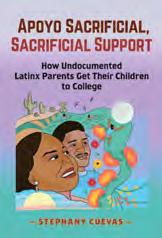
Free Will: Philosophers and Neuroscientists in Conversation

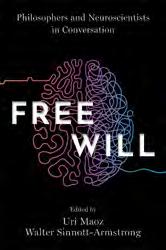
Uri Maoz, Ph.D., assistant professor, Institute for Interdisciplinary Brain and Behavioral Sciences; with Walter Sinnott-Armstrong, Ph.D. | Oxford University Press
Maoz, who teaches psychology, biology, electrical engineering and computer science provides a series of dialogues between neuroscientists and philosophers about the millennia-long conversation on free will.
Comparative Law: Global Legal Traditions

Michael Bazyler, JD, professor of law; with three co-authors | Carolina Academic Press Bazyler and his co-authors explore four legal traditions from around the world, including Western – German civil law and English common law – and nonWestern – Chinese law and Islamic law.
Freirean Echoes: Scholars and Practitioners Dialogue on Critical Ideas in Education
Suzanne SooHoo, Ph.D., professor emerita of education; Kevin Stockbridge, assistant professor of education; Charlotte Achieng-Evensen (Ph.D. ’16) | Myers Education Press
The three authors, inspired by the legacy of Brazilian educator and philosopher Paulo Freire, gather lectures given at Chapman about education and society.
FALL 2022 43 BOOKSHELF
Truly, Madly: Vivien Leigh,Laurence Olivier and the Romance of the Century Stephen Galloway, dean of Dodge College | Grand Central Publishing Immersive research and engaging writing take readers inside a legendary Hollywood relationship full of complications.

Six decades before Ben and Jennifer became “Bennifer,” even before Burton and Taylor became ’60s fodder for the tabloids, there was the beguiling but tortured romance of Laurence Olivier and Vivien Leigh.
Stephen Galloway was spellbound.
“Growing up, I was connected to the West End theatre community in London, and to all these people I knew, Olivier was God,” says Galloway, dean of Chapman University’s Dodge College of Film and Media Arts. “As a 13-year-old, hearing this name, seeing him on the screen, he seemed like this magical figure that towered above all of us.”
Fast forward to 2017, when Galloway was executive editor of the Hollywood Reporter and he learned that the Victoria and Albert Museum had acquired the Vivien Leigh archive. He flew to London to research an article pegged to the 50th anniversary of Leigh’s death.
“I found this incredibly rich resource, with 200 of Olivier’s love letters to Vivien, and correspondence with everyone from Elia Kazan to Winston Churchill,” Galloway recalls. “It became clear that this was much more than an article.”
So Galloway dove into more than four years of research that took him, among other places, to India, where Leigh was born, and deep into the David O. Selznick Collection of memos and other Hollywood studio records archived at the University of Texas.
The result is “Truly, Madly: Vivien Leigh, Laurence Olivier and the Romance of the Century,” (Grand Central Publishing), released this spring. Publishers Weekly calls Galloway’s biography “richly detailed” and “riveting,” while The Washington Post says that the author “lifts himself clear of previous chronicles.”
Galloway says the journey of research and writing was so immersive that it consumed his waking thoughts.
“It really is like a marriage – you’re living with people in your head all the time, so you’d better find them interesting,” says Galloway, who previously authored “Leading Lady: Sherry Lansing and the Making of a Hollywood Groundbreaker,” about the first woman to lead a major studio.
Galloway found many reasons to empathize with Olivier and Leigh.
“She’s the most beautiful woman in the world, extremely talented, unusually intellectual, and she suddenly finds her whole life upended by bipolar disorder,” the author says. “What that means, pre-lithium – pre-any kind of treatment besides sedation and then electroconvulsive therapy – is heartbreaking.”
Leigh ascended on the wings of iconic roles like Scarlett O’Hara in “Gone With the Wind” and Blanche DuBois in “Streetcar Named Desire.” But she also plunged into deep bouts of depression.
“Paralyzed for weeks or even months on end, she dragged herself into work, as the studio system required,” Galloway says. “You have to admire the courage and the strength to execute her art.”
Olivier had his faults but also showed a capacity to endure Leigh’s manic phases, which included hallucinations and screaming fits, perhaps most famously when she peppered him with obscenities during one of their stage productions.
“In the end, he left her, but he put up with that for 20 years, which in itself is an extraordinary act of generosity,” Galloway says. “He was maligned by fans of hers because he did leave her, but she never blamed him. I think it just became unbearable, and at some point he knew he was damaging his art, because he was truly an artist.”
Beyond the details of the volatile romance, Galloway includes in his work the insights of modern-day medical experts, who shed light on how Leigh’s disorder derailed her life and crippled the couple’s relationship.
Ultimately, the story that emerges “pulls us into the maelstrom and shows us the truth,” says former NPR and Los Angeles Times film critic Kenneth Turan.
Galloway isn’t sure how much Chapman film students know about the lives and work of Old Hollywood legends like Leigh and Olivier, but the dean is eager to share some lessons, including that “what we see on screen is not what we see in life.”
“We all think these successful people live fabulously happy existences, and that isn’t necessarily the case,” Galloway says. “If the work doesn’t engage you, the rest is just an illusion.”
“That Hamilton Woman,” released in 1941, was the third film to star Vivien Leigh and Laurence Olivier.

“TRULY, MADLY,” BY DODGE COLLEGE DEAN STEPHEN GALLOWAY, TAKES READERS ON A TEMPESTUOUS JOURNEY WITH SCREEN LEGENDS VIVIEN LEIGH AND LAURENCE OLIVIER.
INSIDE THE MAELSTROM OF A ROMANCE FOR THE AGES BY DENNIS ARP
44 CHAPMAN UNIVERSITY MAGAZINE BOOKSHELF
HERE FOR THE HOLIDAYS
Celebrate the season with the best in holiday entertainment from Chapman University!
COLLEGE OF PERFORMING ARTS PRESENTS:
58th Annual Holiday Wassail Concert
Friday, December 9, 8 p.m. Saturday, December 10, 8 p.m.
The beloved Chapman tradition returns to Musco Center! Join us for a magnificent concert of holiday season favorites sung by the Chapman University Singers, University Choir and Treble Choir along with music performed by The Chapman Orchestra.

Thursday, December 22, 7:30 p.m.
Ballet Folklorico de Los Angeles and Mariachi Garibaldi de Jaime Cuellar return for this spectacular holiday concert. Featuring a dazzling cast of musicians and dancers, the performance celebrates the Mexican traditions, costumes and customs celebrated during this festive season.
Chapman.edu/performingartsevents
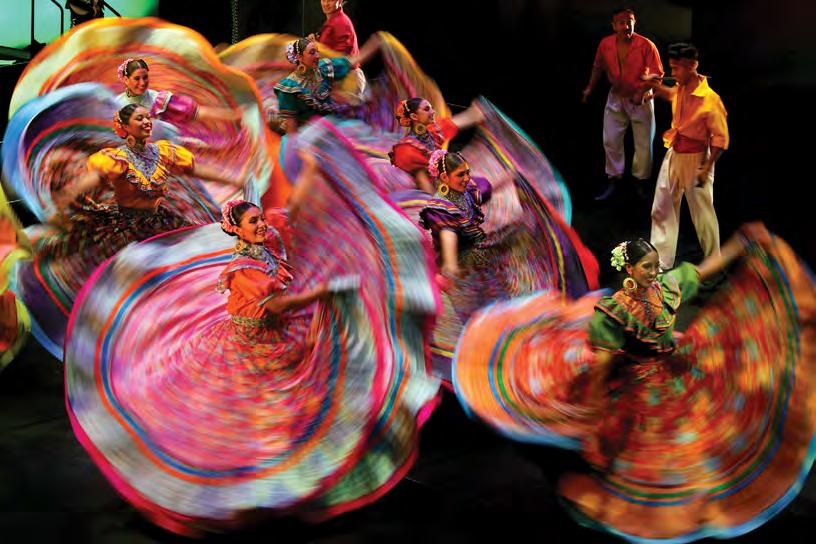
PRESIDENTIAL FELLOW RANKS AMONG TOP 1% OF RESEARCHERS
BY JOY JUEDES
Chapman University Presidential Fellow
Joshua B. Fisher is in the top 1% of scholars in his field for citations, according to scientific research service Clarivate.

Fisher, a Presidential Fellow in Ecosystem Science in Chapman’s Schmid College of Science and Technology, has made Clarivate’s Web of Science 2021 Highly Cited Researchers list, which includes 24 Nobel laureates.
“The recognition indicates that my work is making an impact and is helping advance
scientific fields and knowledge,” says Fisher, who has been cited by colleagues more than 19,000 times. “That said, this achievement is genuinely a team effort, built from a network of support, collaborators and students.”
A climate scientist who studies water, carbon and nutrient cycling in land ecosystems, Fisher has been on the Highly Cited Researchers list three times before. He worked at NASA’s Jet Propulsion Laboratory before coming to Chapman and was lead scientist for a mission on the International Space Station called ECOSTRESS.
Recently, Fisher worked with Chapman Professor Gregory Goldsmith and Columbia University graduate student Savannah Cooley on the first global analysis of a key ECOSTRESS dataset on plant water use and growth. That study was published in April 2022 in the prestigious journal Nature Plants.

SURVEY PROVIDES INSIGHTS ON EQUITY IN STEM
 BY DENNIS ARP
BY DENNIS ARP
A cross the landscape of STEM fields, educators and researchers broadly recognize the need to do more to bolster their ranks from underrepresented communities. Now a Chapman University scientist and her research colleagues have collected hard data they hope will spur science organizations to take tangible steps that improve equity and inclusion.
“What we found is confirmation of what everyone in STEM colloquially knows is wrong in their field,” said Richelle Tanner,
Ph.D., assistant professor of environmental science and policy at Chapman.
Tanner and four other researchers surveyed more than 70 science, technology, engineering and math organizations to learn how they collect demographic data from their constituents and conference attendees. The team found that while many organizations collect information about their members’ race, ethnicity and gender identity, many don’t collect detailed information about sexual orientation and disability status.
With better data, the researchers say, these organizations could do more to retain and recruit more diverse memberships by providing more targeted professional development, networking opportunities and political advocacy.
The findings were summarized in an article published in April in Science magazine, a leading journal published by the American Association for the Advancement of Science.
“As scientists, we like to see data, and these data are very clear,” said Tanner, co-author of the study along with Nicholas Burnett of UC Davis, Alyssa Hernandez of Harvard University, Emily King of UC Berkeley and Kathryn Wilsterman of Colorado State University.
According to the report, more than 80% of those organizations collected some
demographic data from constituents, but fewer than 50% explicitly use the data for resource planning for their members..
The authors also make recommendations for organizations to redesign their membership and conference attendance surveys. These STEM organizations have a chance to help lead a cultural shift toward inclusivity and equity in science, Tanner noted.
CHAPMAN NOW
46 CHAPMAN UNIVERSITY MAGAZINE
“AS SCIENTISTS, WE LIKE TO SEE DATA, AND THESE DATA ARE VERY CLEAR.”
– Richelle Tanner, Ph.D.
IN MEMORIAM
JANE SINCLAIR
PROFESSOR EMERITA JANE DONAGHE

SINCLAIR, who taught art at Chapman University for more than 35 years, passed away Sept. 2, 2021. She was 82.
Sinclair, who was born in Tulsa, Okla., moved to California to teach at what was then Chapman College in 1965. There she met Cameron Sinclair, a father of four who taught in the English and religion departments. They married in 1968.
Jane Sinclair taught painting, drawing and art history at Chapman from 1965 to 2001.
Her interest in art went back to middle school, where a teacher encouraged her talent. She won art competitions as a teenager and got a grant to attend the American Academy in Rome after earning her master’s degree in fine art. Chapman was her first teaching job.
Sinclair received the Valerie Scudder Award for excellence in teaching, scholarly/ creative activity and service to the university. Stepdaughter Connie Sinclair says that Jane “treasured her Chapman friends, traveled abroad with them, and celebrated holidays with them.”
Professor Emeritus Richard Turner taught in the Department of Art with Sinclair for 30 years.
“She put the rest of the world on hold when she was in her studio,” he says. “But she was a beloved teacher – she was generous with her students and forthright in her teaching style.”
Sinclair painted and created collages from paint and photographs. Her work often included parts of images from wellknown pieces.
“She integrated her teaching of painting and drawing and love of art history into her work,” Turner says. “Her interest in art history gave her paintings and collages an additional level of meaning.”
President Emeritus Jim Doti attended a lecture Sinclair gave on contemporary art when he arrived at Chapman as an economics professor in 1974.
“That lecture represented a quantum leap for me in my understanding and appreciation of modern art,” he says. “Jane’s lecture also helped me realize the strength of Chapman’s faculty and why our little college, even back then, almost 50 years ago, was a very special place.”
Doti and his wife, Professor Emerita Lynne Doti, have long collected Sinclair’s work.
“Our house now is a veritable Sinclair Art Museum. When people visit our home, the artworks that provoke the greatest aesthetic interest and pleasure are Jane’s pieces,” he says.
Sinclair didn’t talk about her work much, but “I knew from the amount of time she spent in her studio and the amount of work she produced that it meant a great deal to her,” Turner says.
Sinclair entered juried art exhibits, and won many awards. Some of her work is in Chapman’s Escalette Permanent Collection of Art.


She encouraged her students to pursue art “because it’s a lifestyle.”
“You can’t go into [art] thinking you’re going to make your mark in history,” she said in a magazine interview. “It’s something that you love and you feel incomplete without.”
Sinclair also loved her family, traveling, reading and dogs.
“Living with Jane was fun and magical,” Connie Sinclair says. “Thanksgiving was celebrated lavishly with family, Chapman friends and often with foreign students. Every year, Jane decorated a breathtaking Christmas tree, and she and Cam entertained friends who came to enjoy it with tea and fruitcake.”
Cameron Sinclair preceded his wife in death. They will be interred together in the Columbarium at Chapman’s Fish Interfaith Center.
Professor Emerita Jane Sinclair’s artwork hangs in Chapman University’s School of Communication.
FALL 2022 47
DISTINGUISHED ALUMNI AWARDS
CELEBRATING AND HONORING THE INCREDIBLE ACCOMPLISHMENTS OF OUR CHAPMAN ALUMNI
Each year, Chapman honors alumni who have proved themselves to be exceptional in their accomplishments. As leaders in business, organizations and communities, the honorees represent the finest values and achievements of Chapman University alumni and serve as role models for students and others in our community.
DEAN ANDERSON ‘86
Schmid College of Science and Technology
Retired - VP of Global Operationschemistry at Beckman CoulterA Danaher Operating Company

SYDNI AU HOY ‘22
Schmid College of Science and Technology Cheverton Award recipient
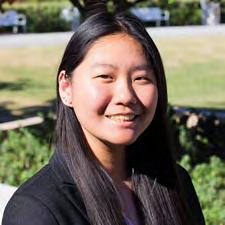
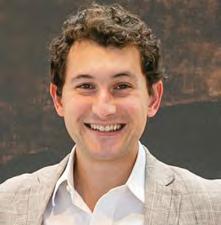

JENNIFER BASSAGE BONFIL ‘02
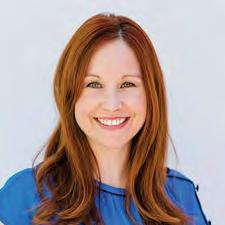
College of Performing Arts Dance education and curriculum specialist at The Wooden Floor
JIM BYRON ‘15
Argyros School of Business and Economics CEO of Nixon Library
KATIE CORNELLA (MMS ‘18)
Crean College of Health and Behavioral Sciences
Lead PA in Interventional Cardiology, at the Orange County Heart Institute, at St. Joseph Hospital
48 CHAPMAN UNIVERSITY MAGAZINE ALUMNI NEWS
SAMANTHA DOREY (JD ‘11)
Fowler School of Law
Founding partner at Everett Dorey LLP

EMILY FRISCH ‘16 (MA ‘17)
Schmid College of Science and Technology
Cheverton Award recipient; medical student at UC Irvine School of Medicine

KELLY GALUSKA ‘06
Dodge College of Film and Media Arts
Creator, producer and writer at Netflix
THE REV. DR. SARAH HALVERSON-CANO ‘99


Wilkinson College of Arts, Humanities, and Social Sciences
Irvine United Congregational Church
DR. JARED T. IZUMI (MA AND ED.S. ‘16)
Attallah College of Educational Studies
Assistant professor in the School Psychology program at the University of Iowa College of Education
DR. TIFFANY PAYTON JAMESON ‘96
Fowler School of Engineering
Organizational psychologist at grit & flow
TYLER RUSSELL MCCUSKER ‘11
School of Communication CEO of Snippet.fm
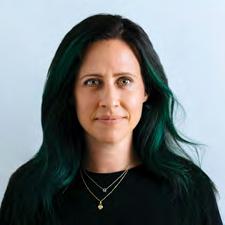
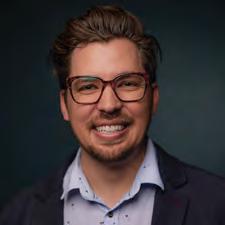
DR. ALEXA ZEIGER (PHARM.D. ‘19)

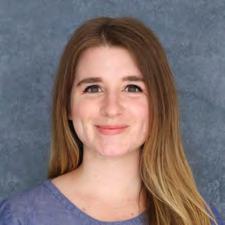
School of Pharmacy
Clinical pharmacist at Cedars-Sinai
FALL 2022 49 ALUMNI NEWS
Erandi Sanchez ’22 began playing music at age 4 and has a deeply rooted passion for mariachi. (Photo by Mark Arditi)
VIRTUOSO OF CONNECTION
BY STACE DUMOSKI
“ My favorite memory has to be very recent, actually,” says Erandi Sanchez ’22, when looking back at her time at Chapman. It was during a spring semester performance of the Mariachi Panteras.
“It was during the last song of the mariachi concert. I could see people in the audience, and a lot of them were crying,” she says.
She found out why after the concert. “Many of them went to Chapman and never actually felt like they connected here because of their Latino heritage. This was the first time that they felt seen as Hispanic people at Chapman,” she says.
“That was very touching because I was able to be a part of the creation of the ensemble, and I was able to lead it. I saw that people who had been at Chapman years ago were able to come back and that there’s this community here at Chapman for Latinos.”
Sanchez, who started playing music when she was just four years old, was instrumental in establishing the mariachi ensemble during her time at Chapman. Though her primary instrument is saxophone, the performance and music education major also plays violin, harp, saxophone, piano and clarinet, plus the guitarrón and vihuela — specialized guitars used to play mariachi music. She also sings.

Her passion for mariachi has deep roots.
“It was something that I knew from a very young age. It’s obviously something that connects to my culture, and my parents, so that always brought us together as a family. And it also made us connect with other families like mine, and other friends that I had met later in school as well. If it weren’t for mariachi, I actually probably wouldn’t have entered the band program in junior high and then continued it in high school,” she says.
After years of performing mariachi with her family, it seemed natural to major in performance when she started college. Along the way, she realized that teaching music could be fun, too.
“I had experience being a class leader and section leader and things like that. I decided that I wanted to do more, and that it would be a great career,” she says.
After graduation, Sanchez will continue at Chapman to earn her teaching credential and Master of Arts in Teaching (MAT) Music Education.
SAXOPHONIST ERANDI SANCHEZ ’22 IS INSTRUMENTAL IN ESTABLISHING THE MARIACHI PANTERAS ENSEMBLE AT CHAPMAN.
50 CHAPMAN UNIVERSITY MAGAZINE ALUMNI NEWS
“I SAW THAT PEOPLE WHO HAD BEEN AT CHAPMAN YEARS AGO WERE ABLE TO COME BACK AND THAT THERE’S THIS COMMUNITY HERE AT CHAPMAN FOR LATINOS.”
– ERANDI SANCHEZ
CANINE CHEMISTRY
BY JOY JUEDES
The beginning of Lauryn DeGreeff’s career in forensic science took her into the heart of true crime with the infamous 2011 trial of Casey Anthony, who was charged with murdering her 2-year-old daughter.
Since then, DeGreeff ’06 has worked largely behind the scenes in the specialty field of canine detection, aiding those who train dogs to sniff out human scents and other odors that help law enforcement and military officials unravel mysteries.
DeGreeff, a Chapman University chemistry graduate, is now an associate professor of chemistry at Florida International University. She continues to focus her research on “what we can learn about odors to improve dogs’ detection,” she says.
For more than a decade, DeGreeff has sought to make it safer and more effective for dogs to find odors that assist the crime-solving efforts of the FBI, Navy and other agencies.
But even with all her professional achievements, attending Chapman remains one of her most rewarding experiences.
“I’m very thankful to Chapman for launching the rest of my career,” she says. “The professors were very supportive.”
DeGreeff, who became interested in forensic science while studying anthropology at New York University, enrolled in Chapman to get a chemistry degree after graduating from NYU. Christopher Kim, associate dean of academic programs at Chapman’s Schmid College of Science and Technology, recalls DeGreeff as a foundational member of his environmental geochemistry research lab when he started at the university.
“Back then, she impressed me with both her aptitude and curiosity for independent
research as well as her commitment to forensic science,” he says. “It’s been incredibly rewarding to watch her personal and career progression over the years and to now consider her a colleague in academia.”
DeGreeff got a bachelor’s in chemistry in two years at Chapman. She was given a special award so she could be included in the honors awards ceremony.
“When I graduated from Chapman, I felt like I had direction. I felt like I knew what I really liked, and I had a community,” she says.
“I never knew canine detection was a forensic discipline. I thought it was very interesting so I jumped on it, joined the research group. I loved it so much that I never left the field,” she says.
She started in forensic science by studying the chemistry of how dogs detect the scent of humans – living and deceased – and their blood. She went on to research how dogs alert to other scents important to investigators, like homemade explosives, fentanyl, marijuana and spilled crude oil.
In addition, DeGreeff investigates factors, such as contamination, that affect the quality of canine detection training aids, as well as how to make dog training safer and more authentic. At the Naval Research Lab, she invented a device that trains dogs to detect mixed odors found in homemade explosives.

Ideally, dogs are trained in the environments they work in. But with homemade explosives, this could pose a hazard. She created the device “because you want the explosive training aid to smell like the real explosive, but not have the hazard of the real explosive,” she says.
DeGreeff also mentors Ph.D. students and is collaborating on a project examining the movement of odor vapor inside of a dog’s nose with Chapman Assistant Professor of Biological Sciences Lindsay Waldrop.
DeGreeff earned her Ph.D. and did a post-doctoral fellowship in the FBI’s Counterterrorism and Forensic Science Research Unit, then worked for a decade in the Naval Research Laboratory.

She was drawn to canine detection when a professor talked about it as she started graduate school.
“That made me really happy, to be able to write ‘Chapman University’ on paperwork I’m filling out,” she says.
Ultimately, DeGreeff is driven to apply her scientific expertise in ways that have realworld impact.
“I like to see it help someone,” she says.
FORENSIC SCIENTIST LAURYN DEGREEFF ’06 STUDIES THE WAYS DOGS DETECT SCENTS, HELPING LAW ENFORCEMENT AGENCIES SOLVE CRIMES.
FALL 2022 51 ALUMNI NEWS
“WHEN I GRADUATED FROM CHAPMAN, I FELT LIKE I HAD DIRECTION ... AND I HAD A COMMUNITY.”
– LAURYN DEGREEFF, PH.D.
1960s
Tom Elliott ’60 and Pat (Wood) Elliott ’60, ’74 returned in July 2022 from a 3½-week European journey that included an ocean cruise from Stockholm to Copenhagen and a river cruise around the lagoons and islands of Venice. Over the years, the Elliotts’ commitment to global citizenship has taken them to 76 countries, where they have always sought out opportunities to lift up the Chapman banner. 1
1970s
Genie Bindi Lee ’72 wrote “My World Campus Afloat Adventure” about her Chapman experience studying during a semester at sea, which she says “literally changed my life.” Among many World Campus Afloat experiences, she recalls dining in the Eiffel Tower, having an audience with Pope Paul VI at the Vatican and participating in an archaeological dig at the Palace of Knossos on Crete.
George Sterne ’78 retired in June after more than 150 performances with LA Opera. The tenor performed more often than any other chorus member in the company’s history. “He’s taken the spotlight and taken pratfalls. Now, he’s taking his final bow,” Los Angeles Times reporter Jordan Riefe wrote before Sterne’s final performance in “Aida” on June 12. “I’ll miss the place, miss the people, miss the productions, and I’ll miss the music,” Sterne told Riefe. 2

Carolyn Waters Broe ’79 is the conductor of the Four Seasons Orchestra and principal violist of the Scottsdale Philharmonic, and she holds a doctorate of musical arts from Arizona State University. In addition, she published “Fifty Famous Composers for Kids of All Ages” in June 2021. The book won a Gold Award from the Mom’s Choice Awards. 3
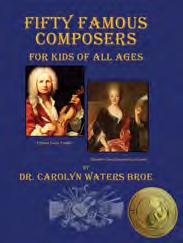
1990s
Jason I. Hernandez ’98 defended his dissertation in July 2022 to become a Doctor of Education (Ed.D.) in Organizational Leadership from Vanderbilt University’s Peabody College of Education. He works as the chief HR officer for Centerstone Healthcare and lives in Memphis with his wife, Nicole Hernandez ’98, and their three children. 4

2000s

Rebecca Kirsch ’05 celebrated the release of the Marvel Studios and Disney+ show “Moon Knight,” for which she is co-executive producer. She is currently working on a new Freeform series set to premiere in fall 2022. 5 (Rebecca Kirsch ’05 with her husband, Paul Sweeney ’05)

Janet Avelar-Cruz ’07 completed the Lake Havasu Area Chamber of Commerce’s nine-month intensive Leadership Lake Havasu program, which includes organizing a community fundraiser. Avelar-Cruz and her class raised $23,000 with their Bands by the Beach event, far exceeding their goal of $6,000. 6


Lindsay Altamirano ’09 opened her own law practice named Alta Legacy Law, APLC in Torrance. It provides services in estate planning, special needs planning, trust administration and probate. 7

CLASS NOTES 52 CHAPMAN UNIVERSITY MAGAZINE
1 2 3 6 5 7 8 4
2010s

Al Raitt ’10 started a new position in November 2021 as director of event presentation and production for Charlotte FC, an expansion franchise in Major League Soccer. For Raitt, it’s a third chance to join in the launch of an MLS experience, after previous roles with LAFC and Austin FC. He helped Charlotte FC set an MLS attendance record by attracting a crowd of 74,479 for its inaugural home match. 8
Jessica Rabalais ’14 and Adam Kalawi ’14 celebrated their wedding at Birch Aquarium in La Jolla. They met at an event during Chapman orientation in 2010 and were office assistants for many years. Other Chapman alumni in the wedding party were Bobby Konoske ’14, Blake Levy ’13, Grace Lavery ’14 and Valerie Reid ’16. Rabelais and Kalawi celebrated their honeymoon in Europe. 9
Tansu Philip ‘16 had her comedy TV pilot “Paratha” accepted into the Pitch-A-Thon competition at SeriesFest Denver. The competition includes a Writers Room opportunity with Unreal Media to develop the pilot into a full-season series. 10


Ryan Richards ’16 is an Air Force officer flying C-17 missions. Recently, he was the flight leader of a team flying in support of a trip to Europe by President Biden.
Kerri Kramer (JD ’17) and Scott Kramer celebrated their marriage in La Jolla with many other Chapman family guests. The couple met just before Kerri started law school at Chapman and dated throughout her law school tenure. They enjoyed their honeymoon in French Polynesia. 11

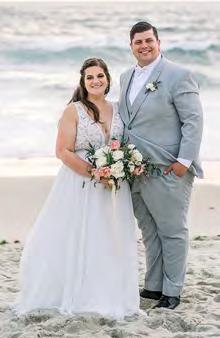
Lily Yasuda ’18 has earned a new position as festival manager at Slamdance, a film festival in Los Angeles. 12

Dominic Milan ’18 has become one of the most successful show producers on Snapchatproducers, reaching 80 million to 100 million views per month. He is also a TikTok creator with more than seven million followers and has worked with Spotify, LG, Discovery and the online Netflix show he hosts. 13
Elaine Oldford ’18 earned her Doctor of Medicine degree from Western Michigan University’s Homer Stryker M.D. School of Medicine on May 12, 2022. She will be starting her residency training in Internal Medicine at USC this summer. 14
THE REV. ERNIE O’DONNELL ’52 passed away on May 28, 2022. O’Donnell was born in Pennsylvania before moving to Arizona as a young child to help alleviate the symptoms of asthma. In high school, O’Donnell began attending a Disciples of Christ church, where the minister introduced him to Chapman. O’Donnell earned a full scholarship and ultimately found his calling as a pastor who served a number of church communities, predominately in Arkansas and Texas. In retirement, he and his wife, Judy, became members of University Christian Church as they also visited mission stations all over the world. The O’Donnells have established a legacy gift to support Disciples of Christ Scholarships at Chapman.

CLASS NOTES
11 THE REV. ERNIE O’DONNELL ’52 9 10 11 13 14 12 FALL 2022 53 IN MEMORIAM
SALLY RUBIN
CHAPMAN IN HOLLYWOOD
KIDS SAY THE MOST INSIGHTFUL THINGS
BY DENNIS ARP
Director Sally Rubin is in her element with kids before a screening of “Mama Has a Mustache” at the HollyShorts Film Festival.
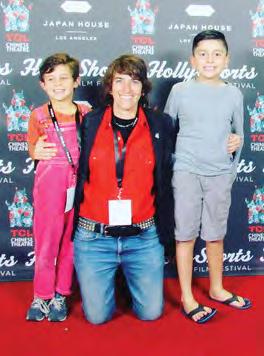
Documentarian Sally Rubin admits that she’s never been good at picking titles for her films. But this time, a great idea came straight from the hip, which is where she was carrying her then-2-year-old daughter, Millie.
“One day she laughed and said, ‘Ha, ha, Mama has a mustache,’” recalls Rubin, Chapman University professor and acclaimed director of feature-length documentaries such as “Hillbilly” and “Deep Down.” “I remember thinking, ‘Oh, I have to make a movie to fit that title.’”
“Mama Has a Mustache: Kids Talk Gender” is an animated 10-minute documentary featuring audio interviews with a diverse group of young children. In their own charming words, the youngsters reflect on identity and family outside the traditional gender binary.

It’s particularly exciting for Rubin that the conversations are just getting started. Disney+ plans to expand development of a “Kids Talk” series, working on further episodes featuring Rubin interviewing youngsters about difference, faith, bullying and other subjects.
Rubin was inspired to make “Mama Has a Mustache” “as someone who identifies as nonbinary but who decided to
be pregnant and have a kid,” she says. “I wanted to look at this new gender frontier, especially as I’ve been meeting and working with Chapman students who more and more are identifying not just as transgender but as nonbinary.”
The reception for the film “has been way better than I could have imagined,” Rubin says. “Mama” has screened at more than 25 festivals, from Outfest to the Oscar-qualifying New York International Children’s Film Festival to the San Francisco International Film Festival and, most recently, MountainFilm in Telluride, Colo.
As “Mama Has a Mustache” sparks a dialogue about gender identity, Rubin acknowledges that other forces – in legislatures, on social media and elsewhere – are pushing back against a nonbinary understanding of gender.
Bring on that conversation, too, Rubin says.
“Controversy is great,” the filmmaker says. “Not everyone has to feel like I do, or like the kids in the movie do. I understand that people have very strong opinions about how kids should be raised. I just want ‘Mama Has a Mustache’ to be out there as an option for parents and school systems to decide.”
SALLY RUBIN’S DOCUMENTARY “MAMA HAS A MUSTACHE” INSPIRES DEVELOPMENT OF A DISNEY+ SERIES FEATURING YOUNG VOICES.
Rubin’s documentary features a fun clip-art style of animation.
”CONTROVERSY
IS GREAT.”
–
54 CHAPMAN UNIVERSITY MAGAZINE ALUMNI NEWS
ONRAMP TO BREAKTHROUGH
Now Potula (MBA/MFA ’23) is taking his career into his own hands thanks to the program, which taps the expertise of professors and mentors from Dodge College of Film and Media Arts, Argyros School of Business and Economics, and Fowler School of Law.
T RIBECA FESTIVAL PROVIDES OPPORTUNITY TO NETWORK AND PURSUE DEALS
“ You’re too different,” Venk Potula has been told by more than one casting director. “You won’t have a career because there’s not enough work for you,” a Hollywood agent once counseled.
“As a dark-skinned South Asian person, I’m often defined by my race,” Potula lamented. “They make judgments about what I can do and parts I can play based on what I can’t control.”
So after a decade of discouragement at the hands of entertainment industry gatekeepers, Potula decided to build his own gate.
He enrolled in Chapman University’s Industry OnRamp Program, a post-graduate program that provides crossdisciplinary career prep for creatives who want to develop their own movies, TV shows and other projects.
Studying with industry mentors, Potula and other Chapman grad students are learning the business as well as the art of filmmaking – from securing funding and legal representation to marketing and distribution.
“The program is designed so that many more Duffer Brothers will be launched from Chapman, where they can meet their future lawyer, agent and manager,” said program director Judd Funk, referring to Matt and Ross Duffer ’07, Chapman graduates and creators of the hit Netflix series “Stranger Things.”
Potula is already applying his lessons as a producer and star of the indie film “Four Samosas,” which generated buzz surrounding its world premiere at the Tribeca Film Festival on June 10 in New York City.
The first screening of the quirky comedy sold out in 10 minutes.
“Four Samosas,” written and directed by Ravi Kapoor, tells the story of wanna-be rapper Vinny (Potula), who talks his friends into helping him steal his ex-girlfriend’s dowry jewels. Reviewers have lauded the film’s “genuine laughs” and “glorious lunacy.” At the Tribeca Festival, which concluded June 19, Potula and producing partners Kapoor, Rajiv Maikhuri and Craig Stovel courted support that includes distribution deals.
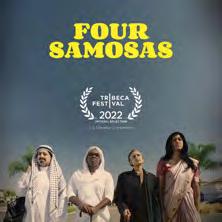
Such deal-making was not on Potula’s radar when he moved to Los Angeles from his native Atlanta 11 years ago, first to attend UCLA’s School of Theater, Film and Television and then to pursue a professional acting career.

He has co-created and starred in podcasts, and he has directed indie shorts, but “Four Samosas” is the first feature film for which Potula has taken on the role of producer.
With the project, everything he’s learning in his OnRamp Program “became relevant and useful,” he said.
“I could go through every class and tell you something I’ve taken from it that’s helping me. When Chapman talks about a personalized education, that’s as personalized as it gets.”
”AS A DARK-SKINNED SOUTH ASIAN PERSON, I’M OFTEN DEFINED BY MY RACE.”
– VENK POTULA
AS HIS FEATURE “FOUR SAMOSAS” GENERATES BUZZ, VENK POTULA (MBA/MFA ’23) APPLIES CAREER SKILLS GAINED IN CHAPMAN’S ONRAMP PROGRAM TO CREATE HIS OWN INDUSTRY OPPORTUNITIES.
B Y DENNIS ARP
FALL 2022 55 ALUMNI NEWS
BY S TACE DUMOSKI
Two reports released by Beacon Economics, an independent economic research firm, have concluded that “[Chapman University’s] activities generate significant economic output that supports thousands of jobs and creates millions of dollars in essential tax revenues at the state and local levels.”
According to the reports, Chapman University generates more than $213 million in economic output for the City of Orange annually, and more than $1.1 billion for California.
Other significant data from the reports include:
$9.8 million in property taxes paid to the City of Orange between 2011-2021.
$82.7 million in university spending in the City of Orange, $64.4 million in student spending, and $2.2 million in visitor spending.
$52.6 million in state and local tax revenue generated by Chapman economic activity.

Though the university has conducted similar analyses in the past through the A. Gary Anderson Center, those studies have always focused on Chapman’s economic contributions to the community. The new reports dig deeper, exploring the many cultural, social and philanthropic contributions that Chapman provides as well, which are often more difficult to quantify.
”The value of an institution is in its relationship with the local community,” says President Daniele C. Struppa. “We are proud to call Orange our home and want to give back in every way that we can. These numbers are very impressive, but it’s our strong partnerships in the community that are the most meaningful.”
CHAPMAN’S GROWING BENEFITS TO THE COMMUNITY
“With these two reports, we are able to paint a broader picture of all of the ways Chapman is positively contributing to our local community,” says Alisa Driscoll, the university’s vice president of community relations. The Office of Community Relations was created six years ago to be a consistent resource for the university’s neighbors, businesses and nonprofit organizations.
For Driscoll, who is a resident of the City of Orange, the most powerful information that these reports provide is not just the direct economic impact of the university – sales tax, property, tax, all of those critical items to the welfare of our hometown – but also the ripple effect of Chapman’s contributions to the community.
employees. We’re supporting construction work, real estate, retail, restaurants.”
The reports also highlight the amount of community engagement that the university has conducted, which has been an institutional focus over the past several years.
“All of our schools and colleges are giving back in significant ways, and the university has made it a priority to demonstrate that Chapman is proud to be a valuable partner and good neighbor with the communities that surround our campus,” says Driscoll.
HERE TO SUPPORT OUR NEIGHBORS
These reports examine community efforts in detail, giving prominence to initiatives that don’t always get much attention.
“Before working on this report, there were a few things that I was not as fully aware of,” says Driscoll, “one of them being all of the ways Chapman is contributing to our local parks. Chapman University paid to develop the softball field at El Camino Park to make it NCAA compatible. And we continue to maintain that field as well as the baseball field at Hart Park.”
“For example, the number of jobs that we’re supporting in our local community is 2,666 in the City of Orange and 5,428 In Orange County as a whole,” she explains. “That’s a lot of people who are being supported just because of Chapman University’s presence in the community. And it’s not just our
To date, Chapman has spent almost $450,000 on maintenance costs for Hart Park since June 2017. “This is something that provides a real tangible community benefit,” says Driscoll. “It’s not just for the use of our sports teams who were there during the season. It’s available for community use as well.”
“That’s something we feel really passionate about, investing in our local community to provide those additional resources for our neighbors to take advantage of,” says Driscoll.

REPORTS SHOW THAT THE UNIVERSITY GENERATES MORE THAN $213 MILLION IN ECONOMIC OUTPUT FOR THE CITY OF ORANGE, BUT INTANGIBLE BENEFITS HAVE THE BIGGEST EFFECT.
CHAPMAN’S LOCAL IMPACT IS MORE THAN MONETARY
56 CHAPMAN UNIVERSITY MAGAZINE
“These numbers are very impressive, but it’s our strong partnerships in the community that are the most meaningful.”
– Daniele C. Struppa
To see the full report, visit: Chapm an.edu/co mmunityimpact Read more about Chapman’s commitment to uplifting our community on the opposite page. HERE TO BE A GOOD NEIGHBOR. TOTAL SPENDING in the City of Orange $2.2M Visitor Spending $64.4M Student Spending $82.7M University Spending JOBS supported by Chapman University 2,667 Jobs in Orange 9,197 Jobs in Orange County TAX REVENUE generated by Chapman economic activity $52.6M State and Local Taxes $91.7M Federal Taxes LABOR INCOME generated by Chapman $102.9M in Orange $238.6M in Orange County PROPERTY TAXES paid to the City of Orange 2011-2021 $9.8M GENERATES OVER $213 million in economic output for the City of Orange $536 million for Orange County CHAPMAN UNIVERSITY
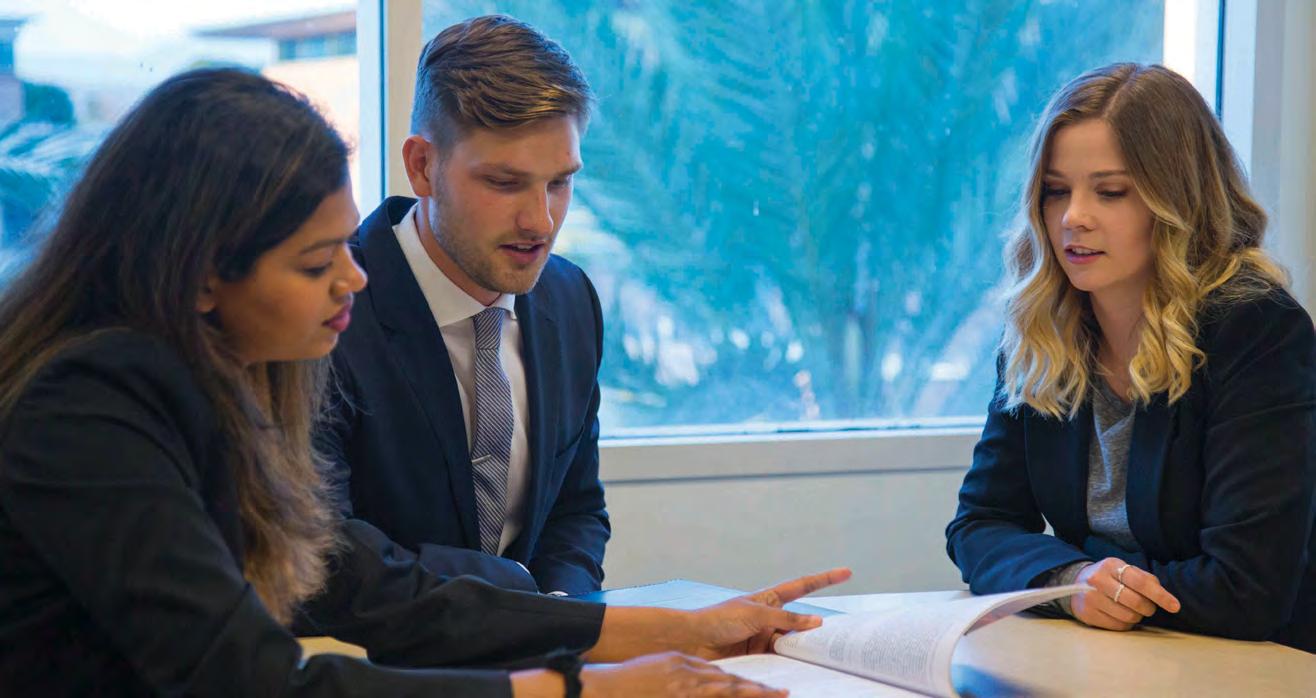
ADVANCE YOUR CAREER. MBA • MS ACCOUNTING • MS REAL ESTATE C orporate tuition reimbursement matched. Inquire for GMAT waiver consideration. Learn more at Chapm an.edu/business *According to U.S. News & World Report, March 2022. #72 Best Business Schools in the nation* #3 MBA among private schools on the West Coast* One University Drive Orange, California 92866 Chapman.edu









 Daniele C. Struppa President, Chapman University
Daniele C. Struppa President, Chapman University




























 BY SARI HARRAR
BY SARI HARRAR









 BY DENNIS ARP
BY DENNIS ARP


























































































 BY DENNIS ARP
BY DENNIS ARP









































